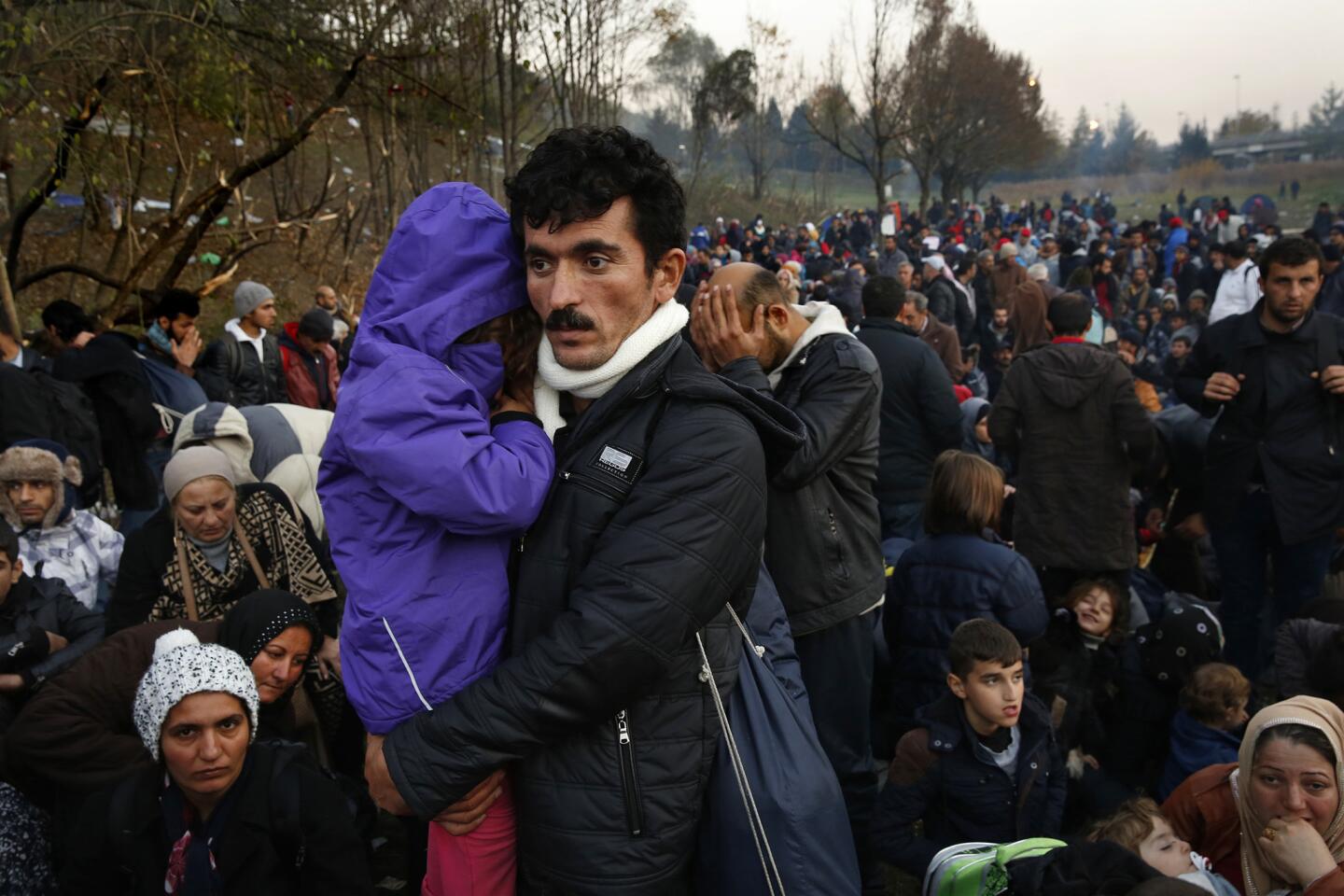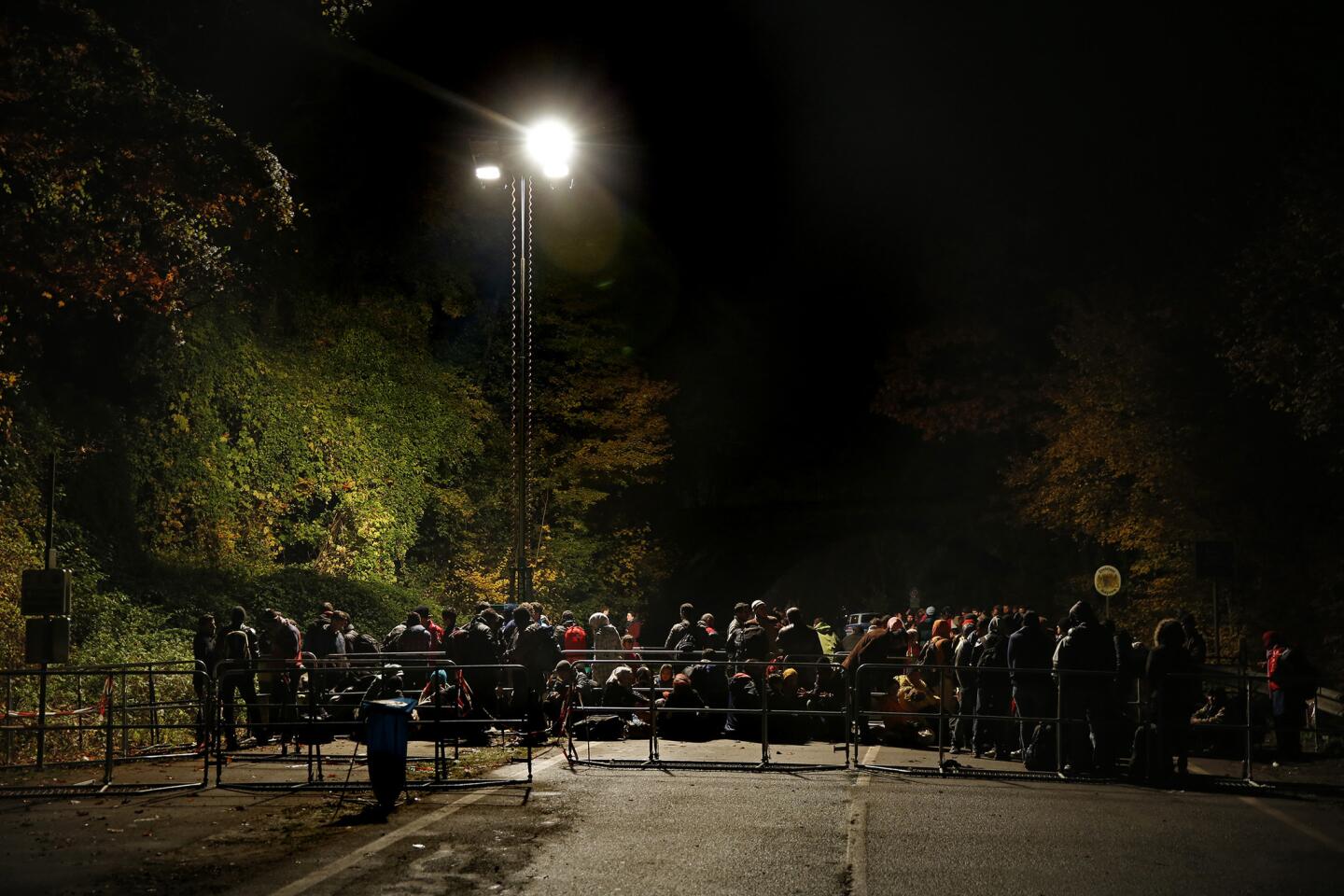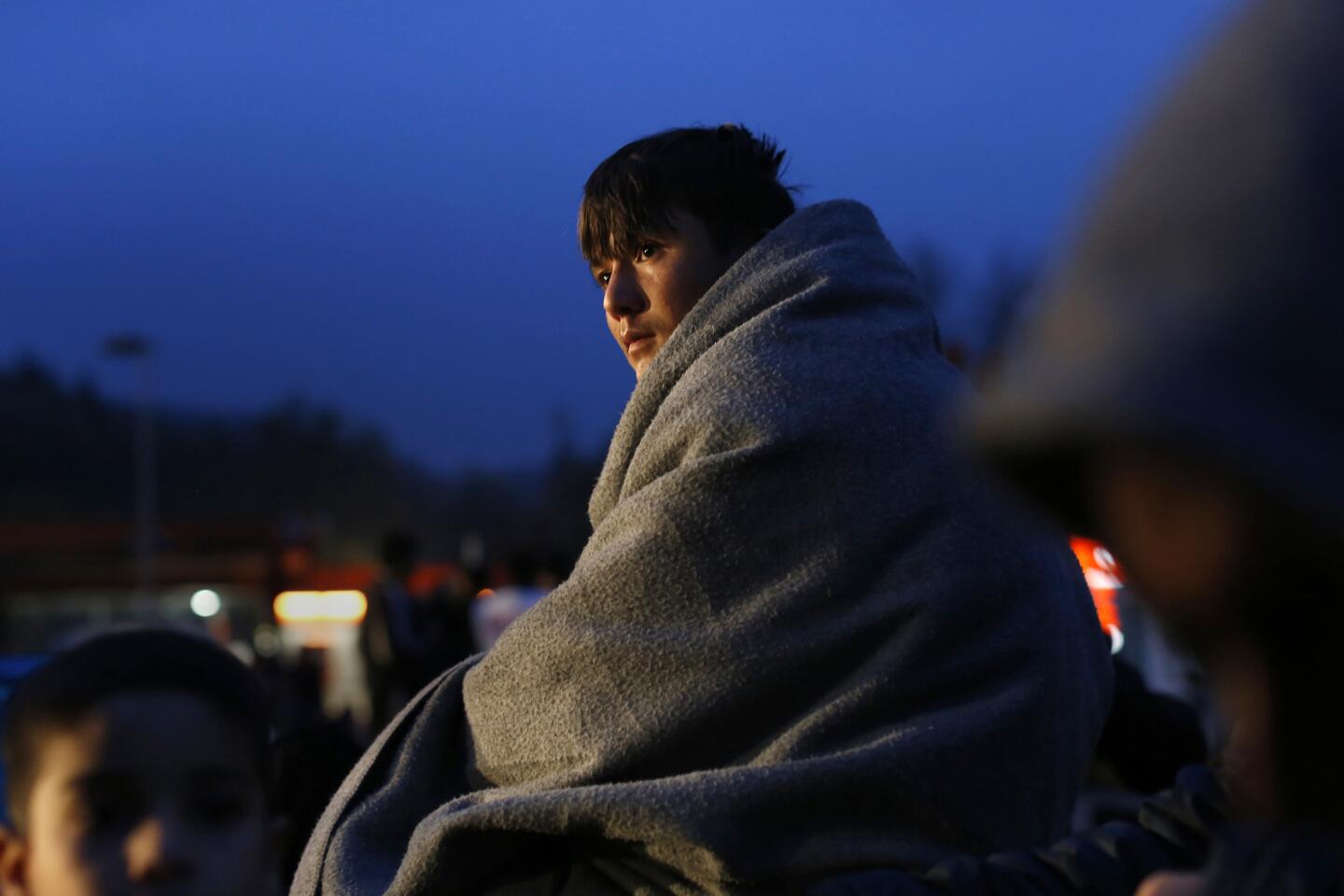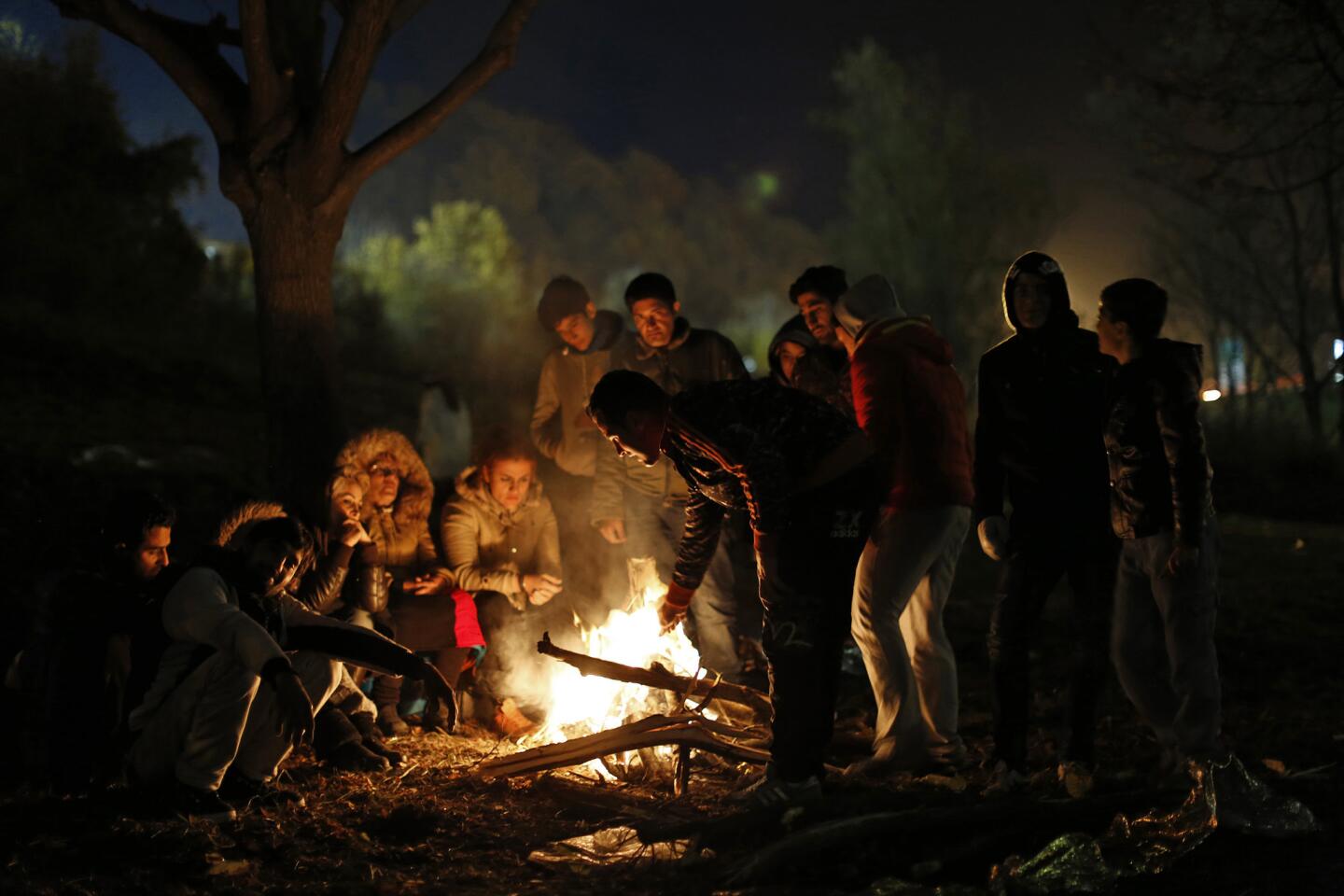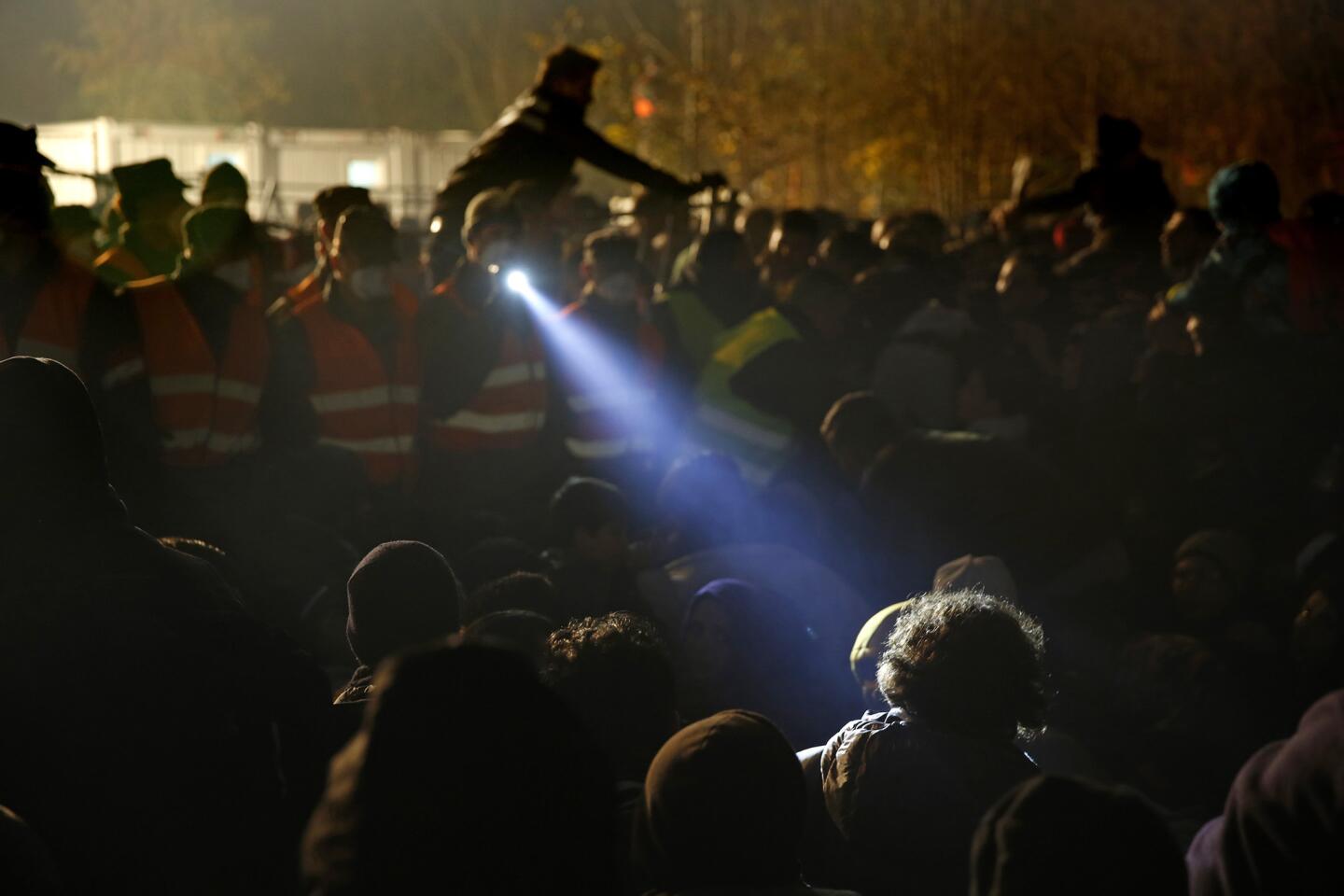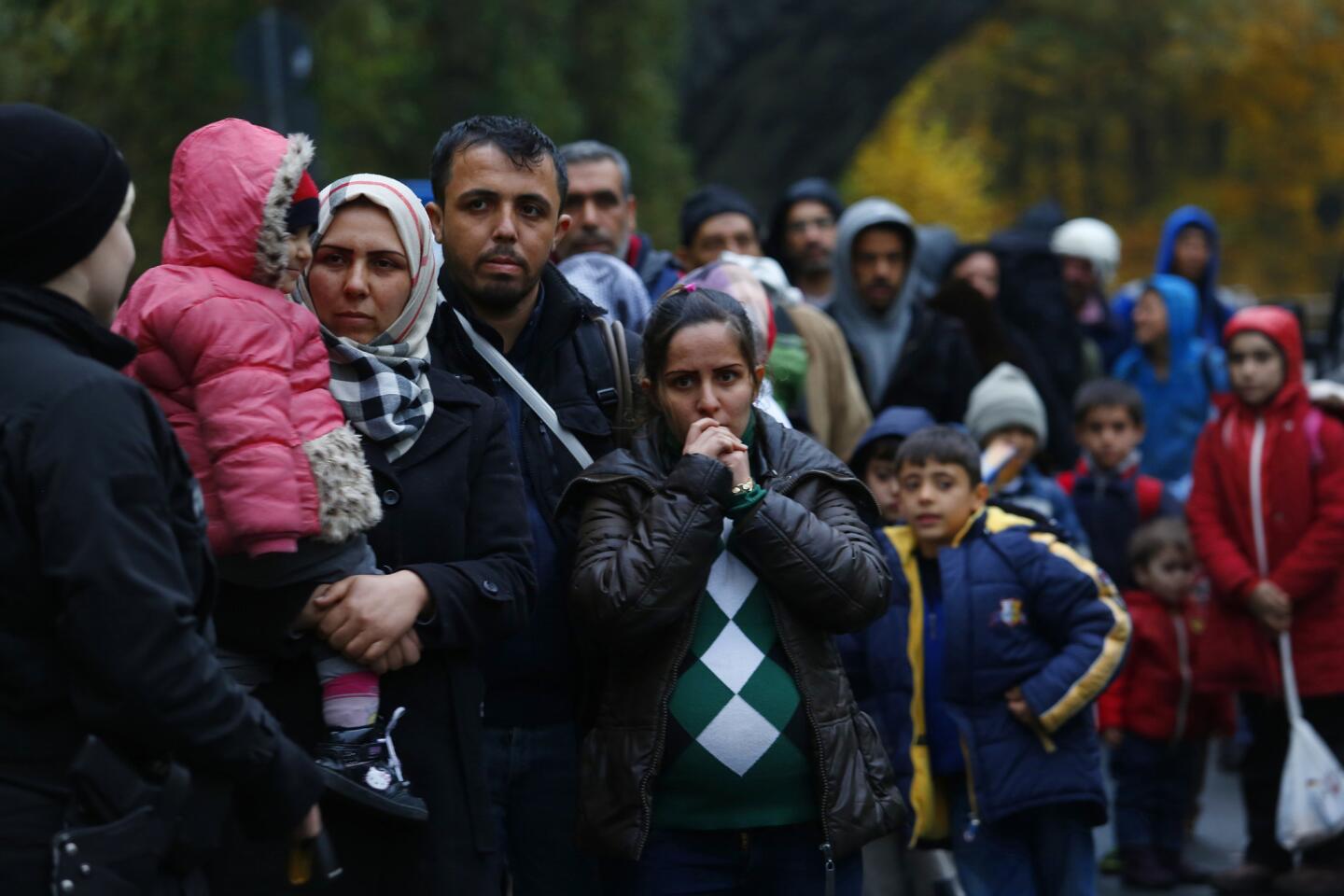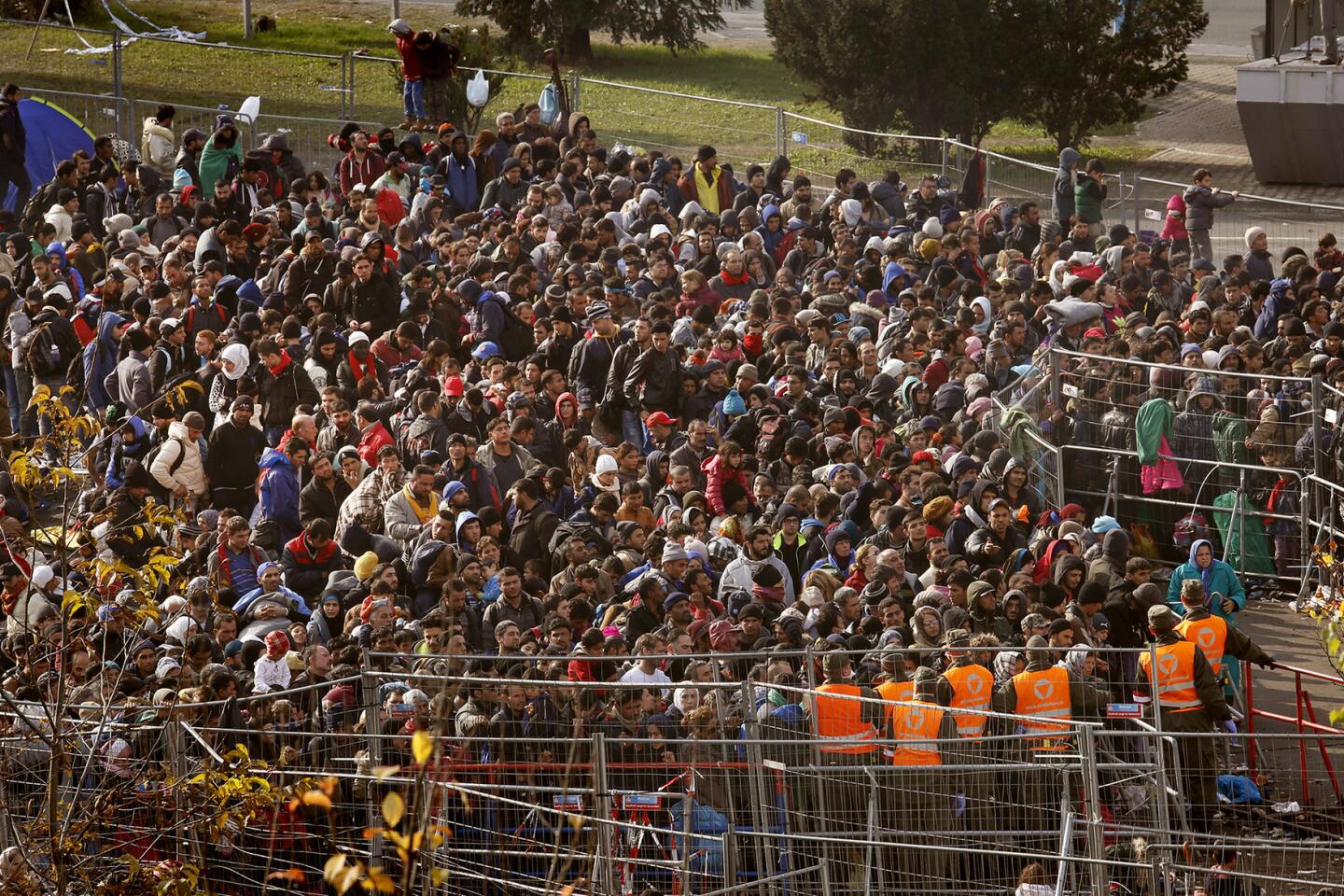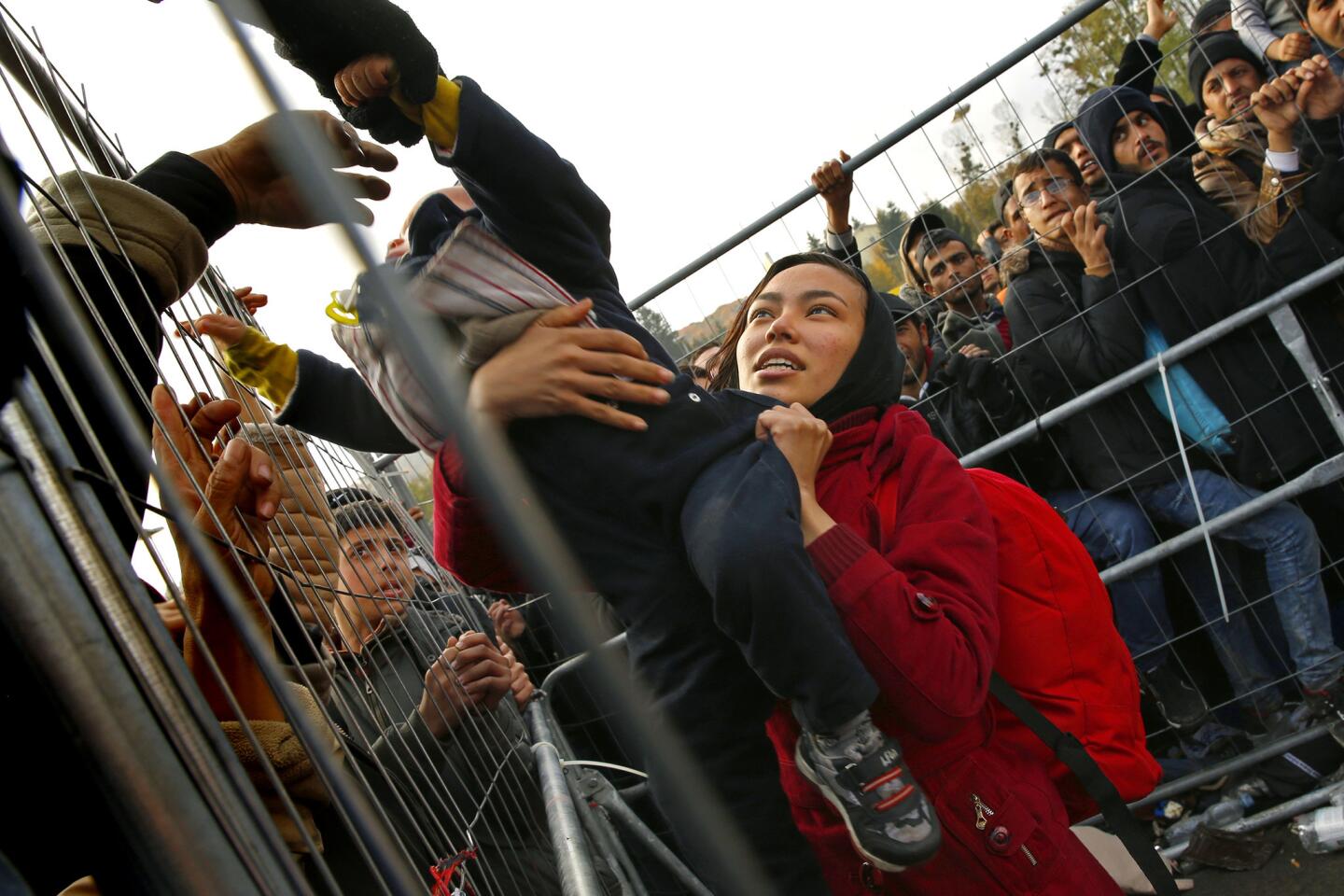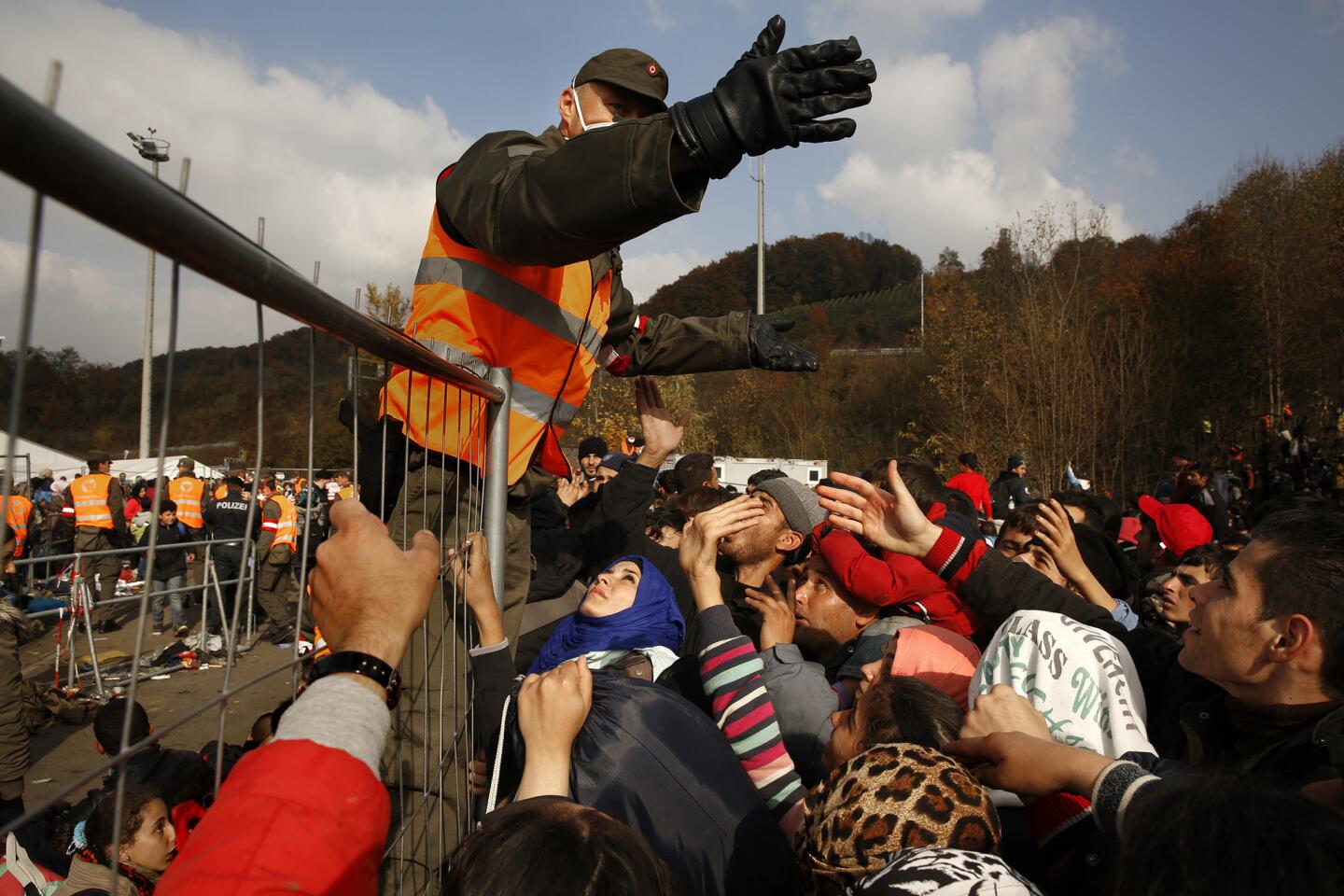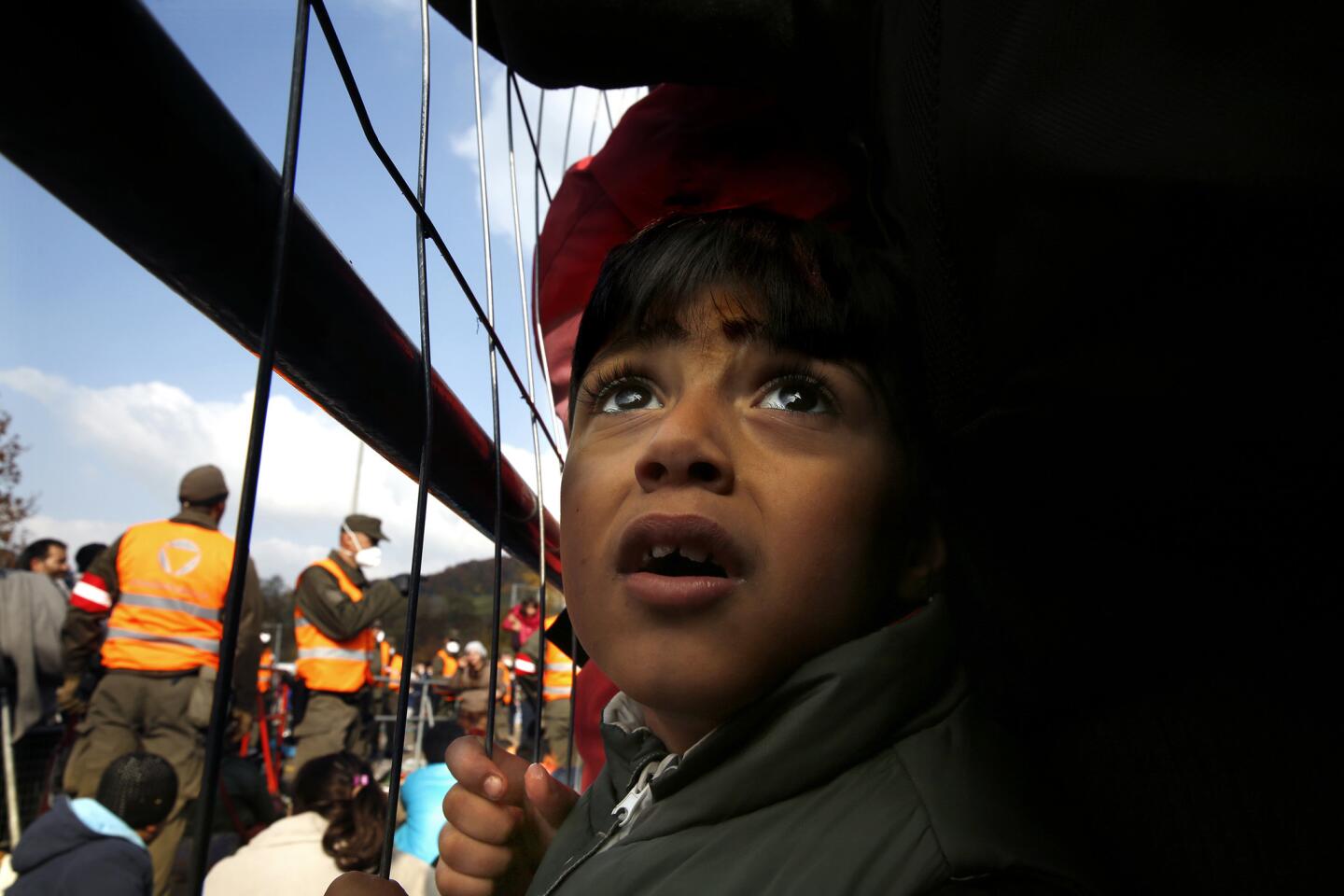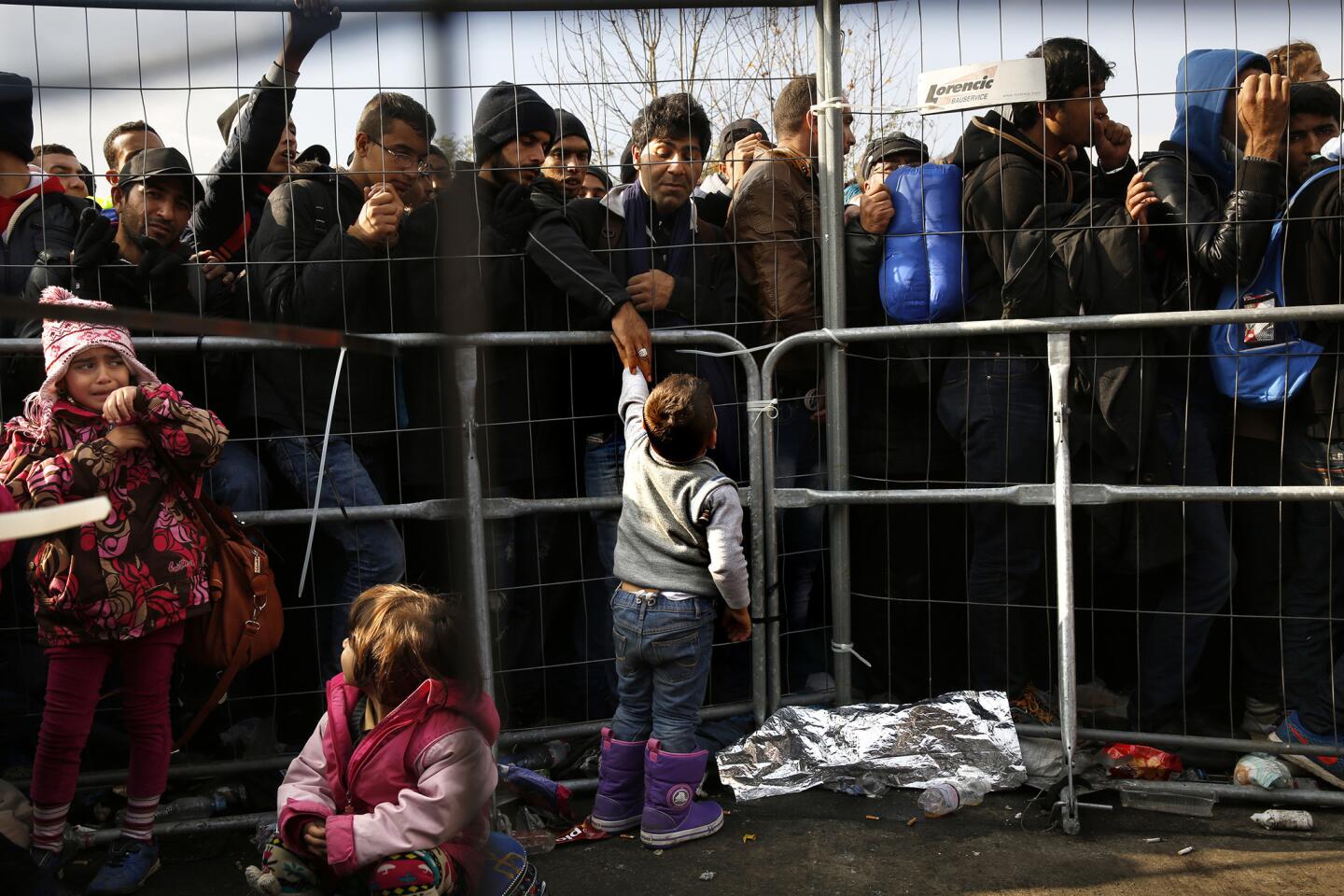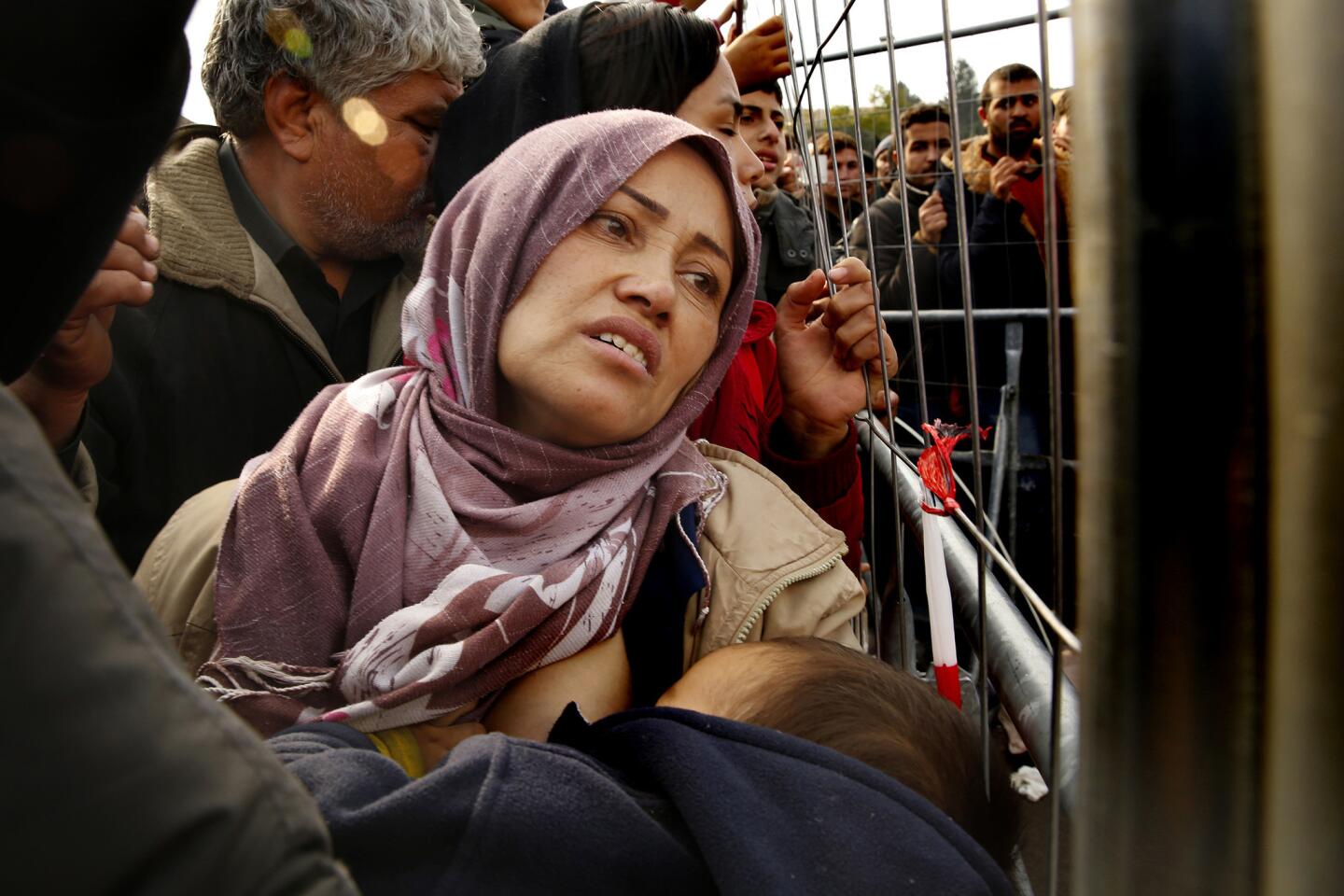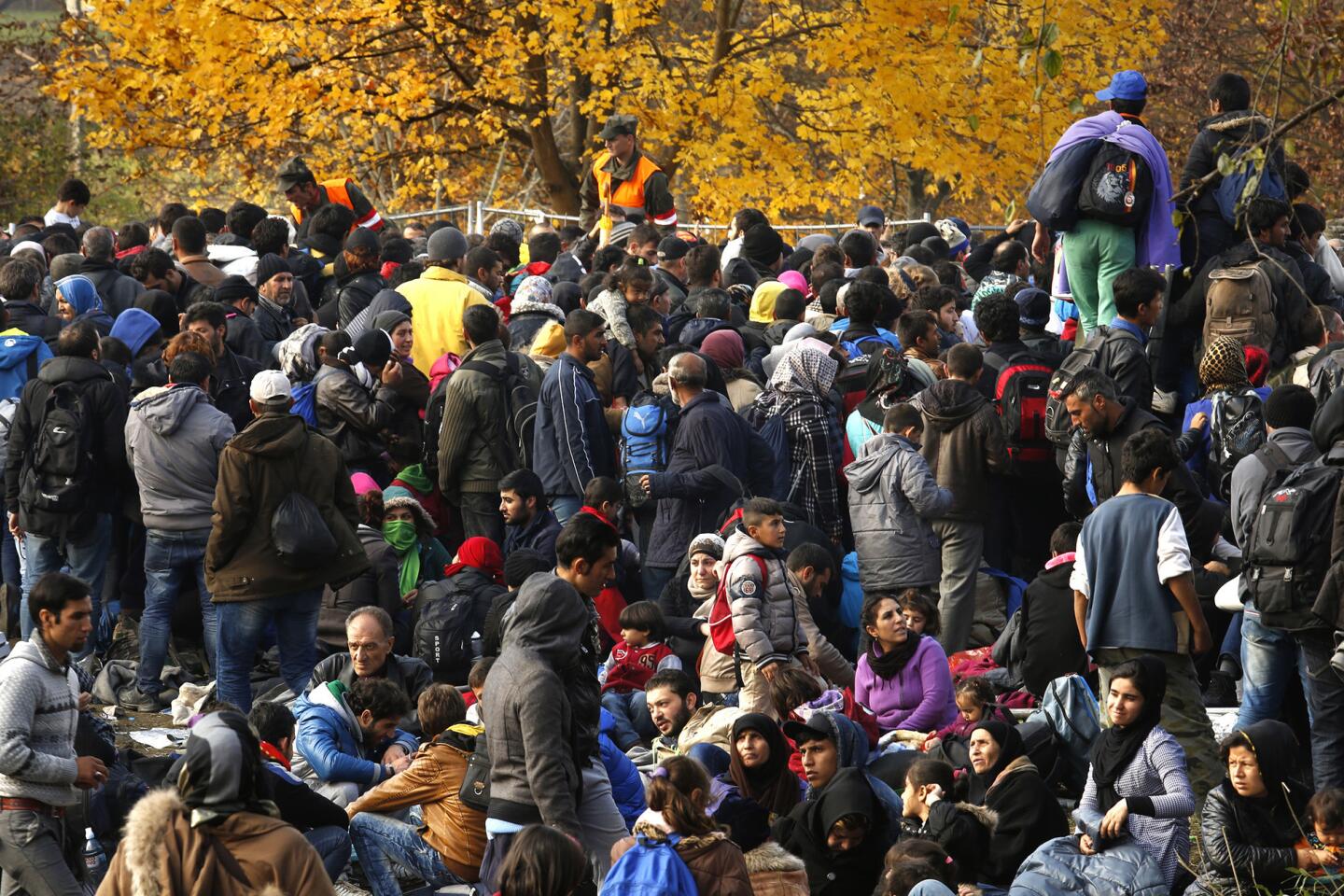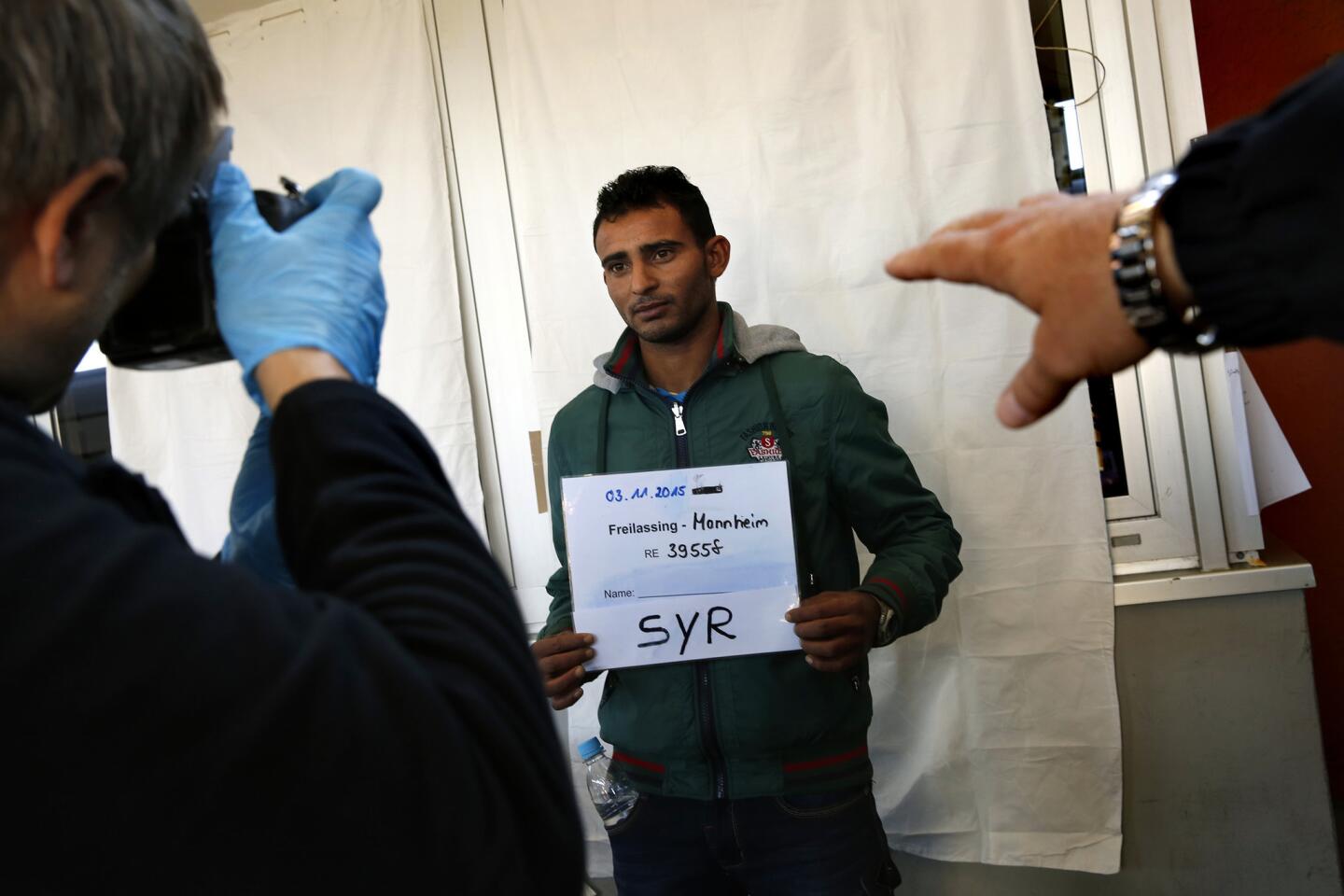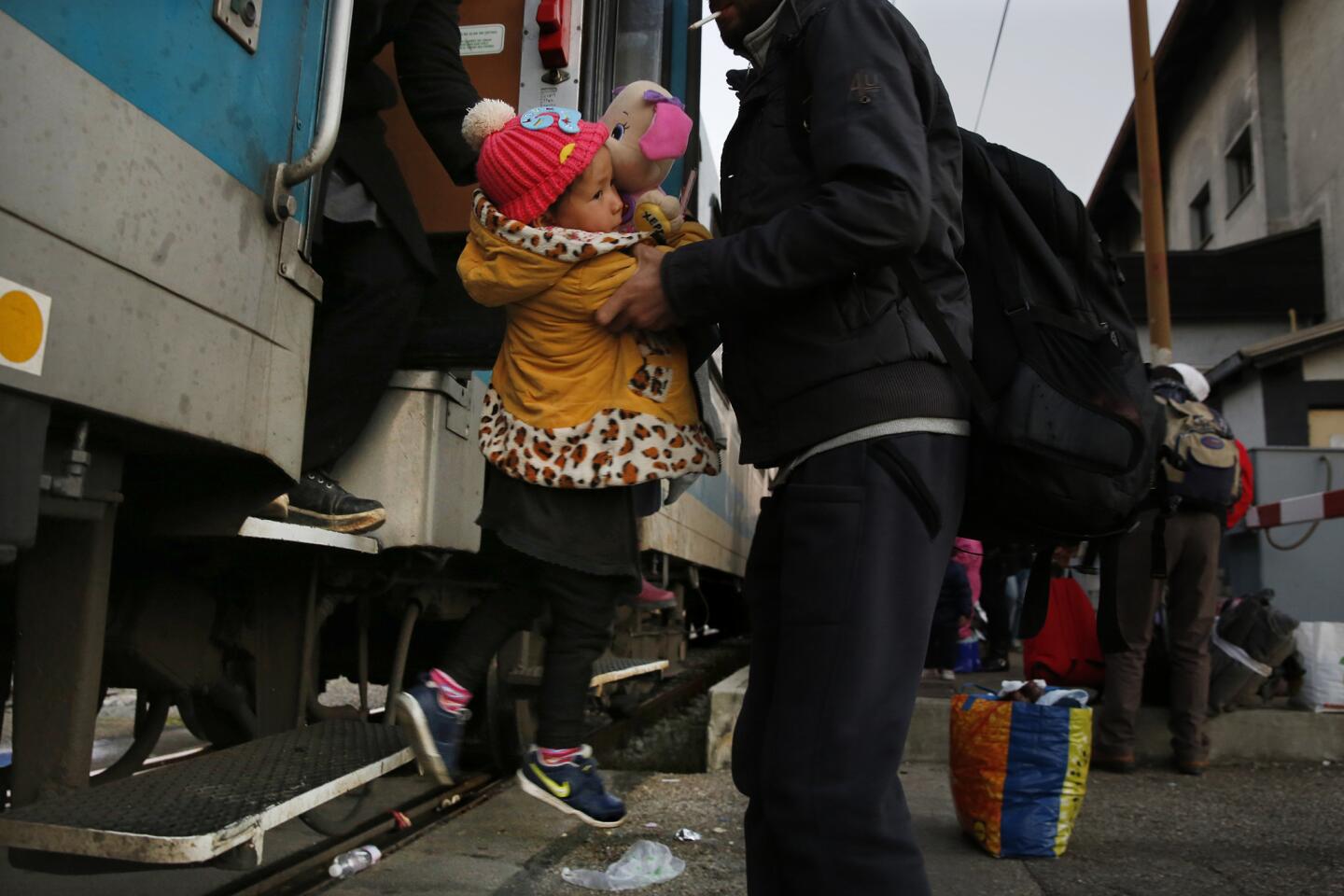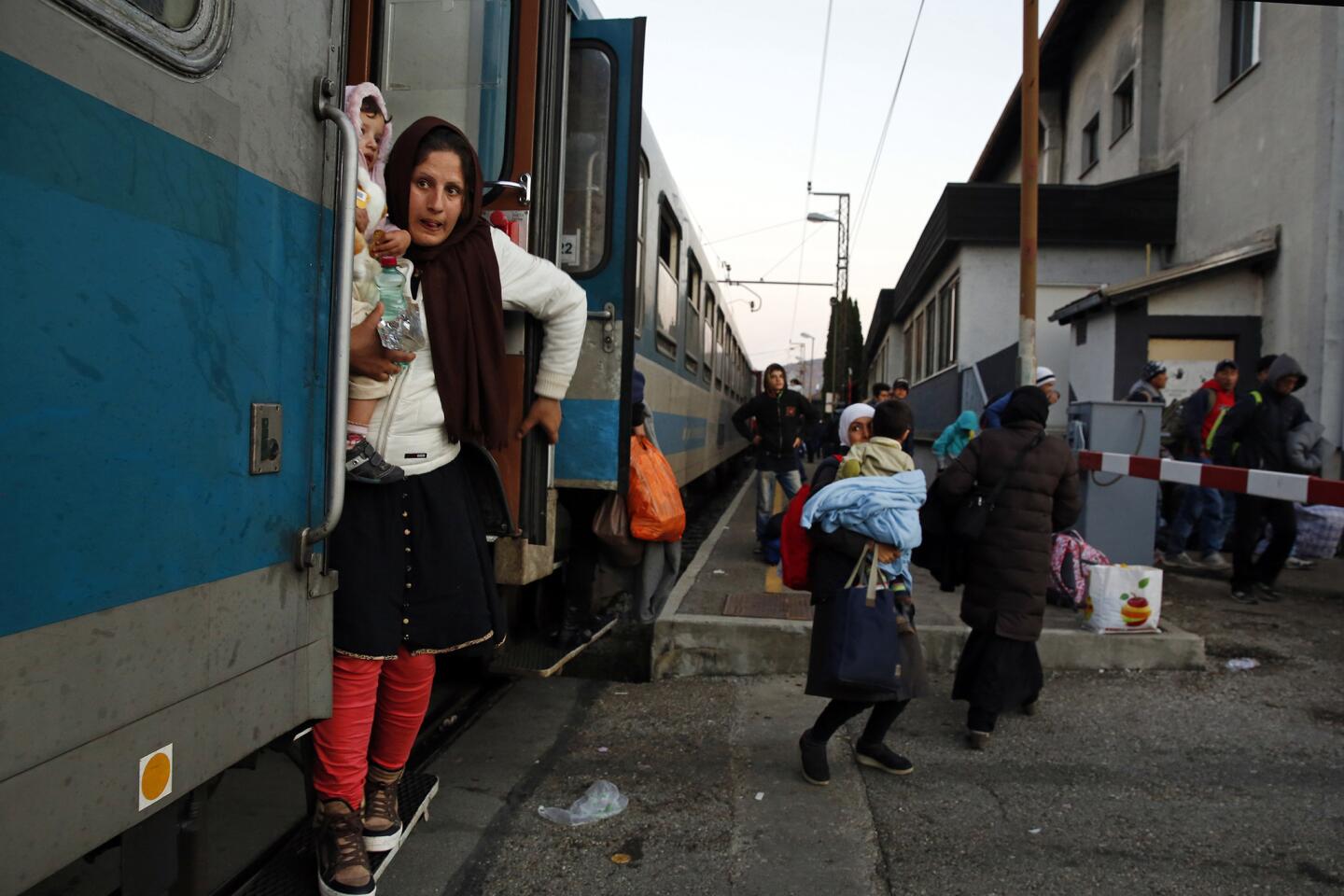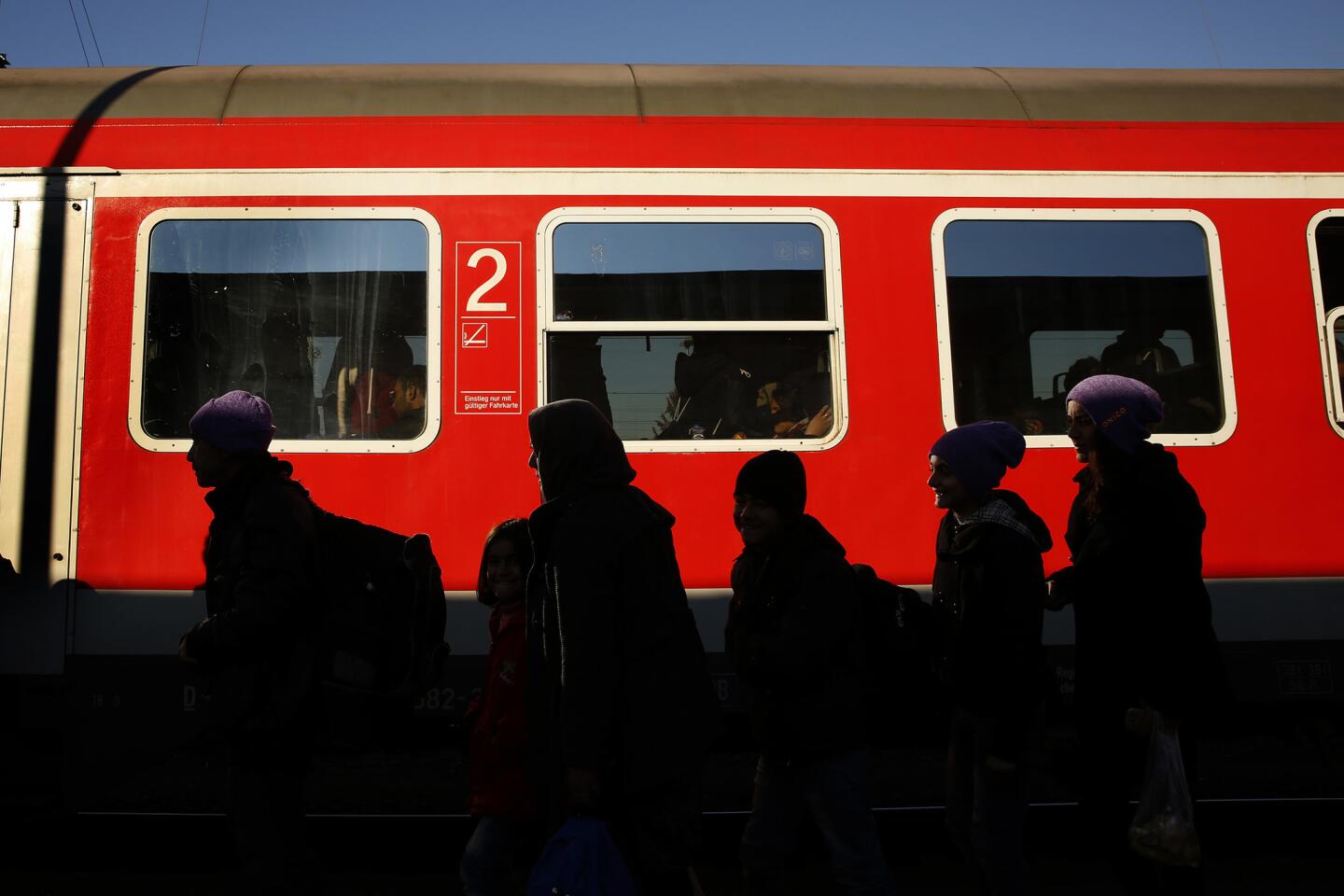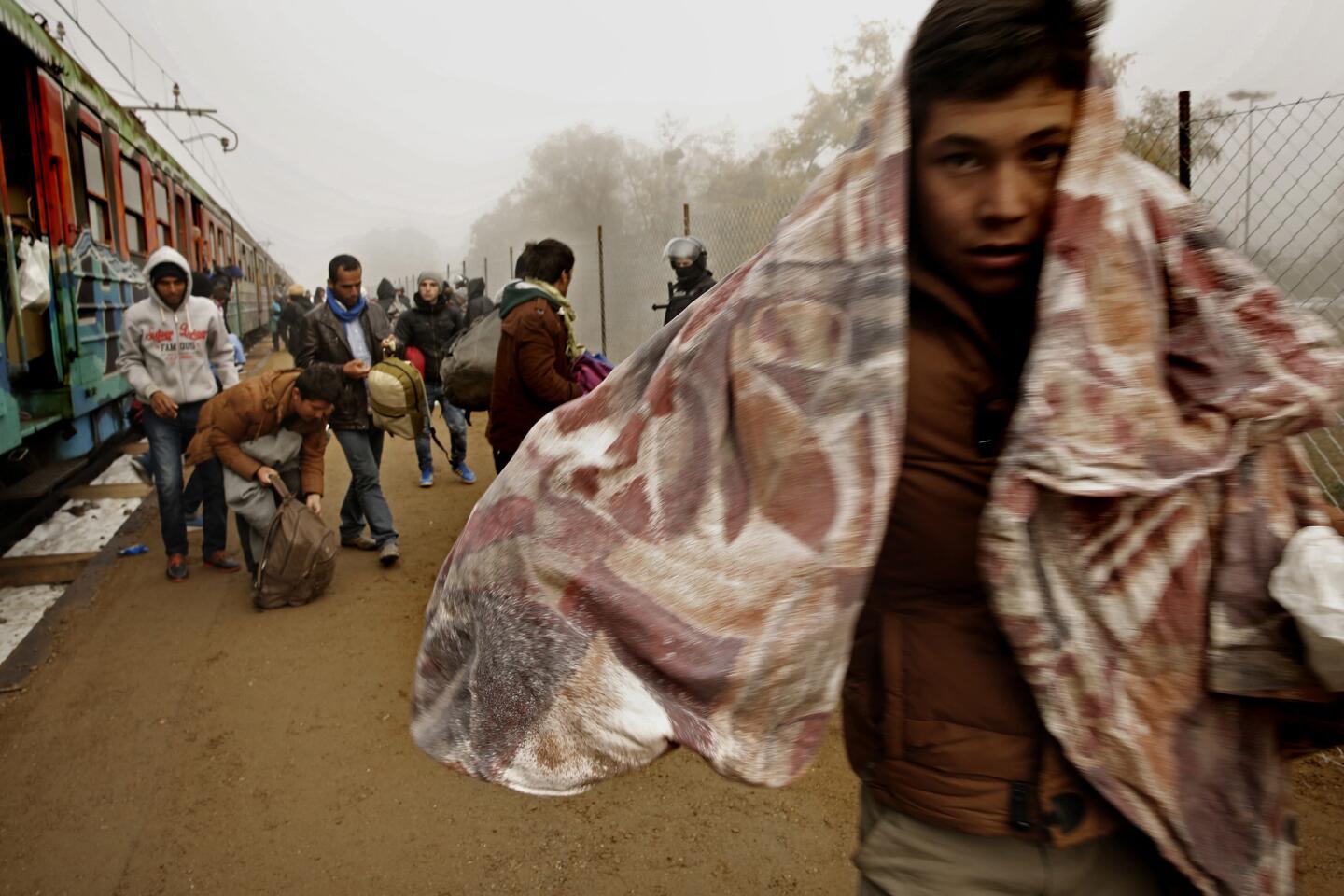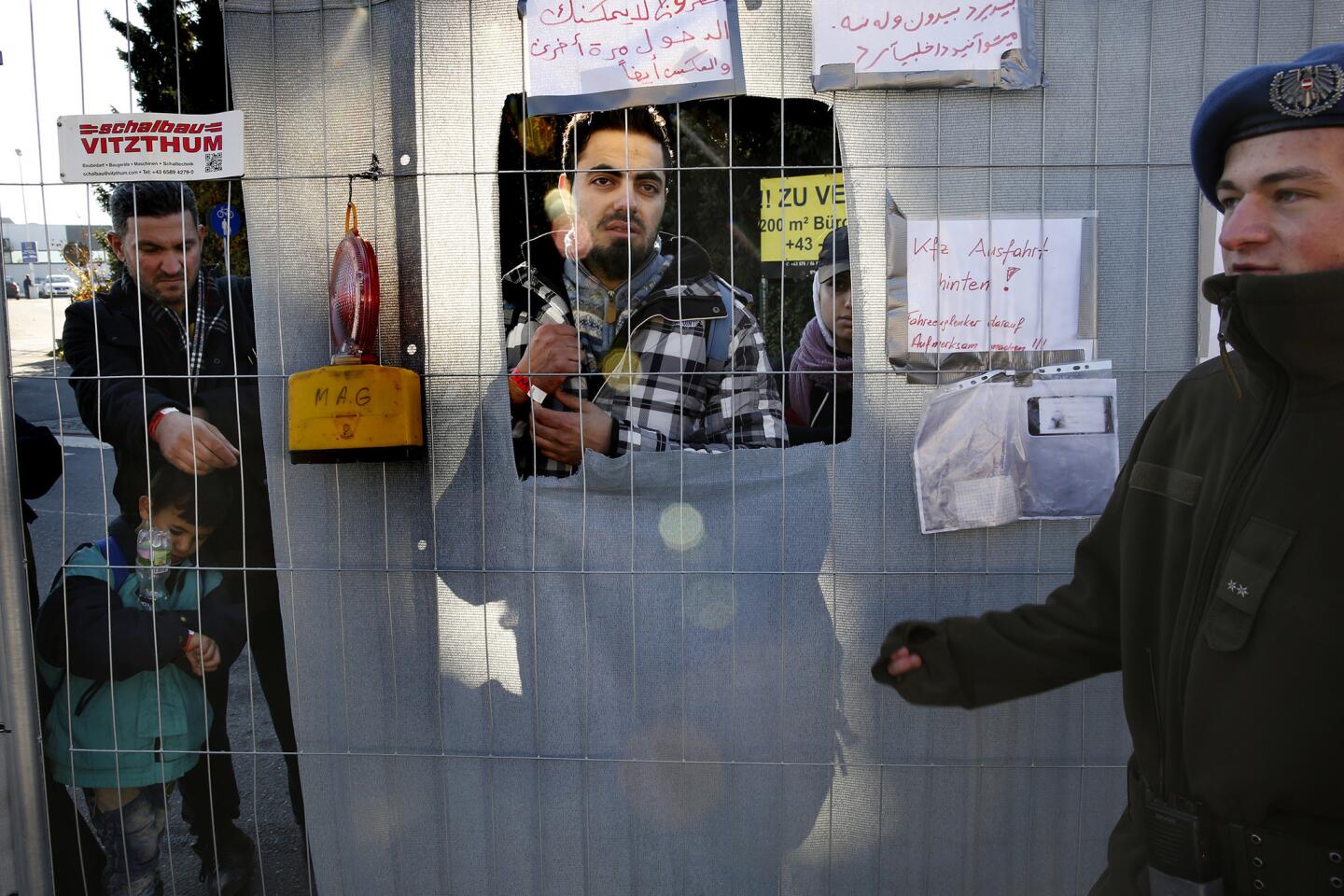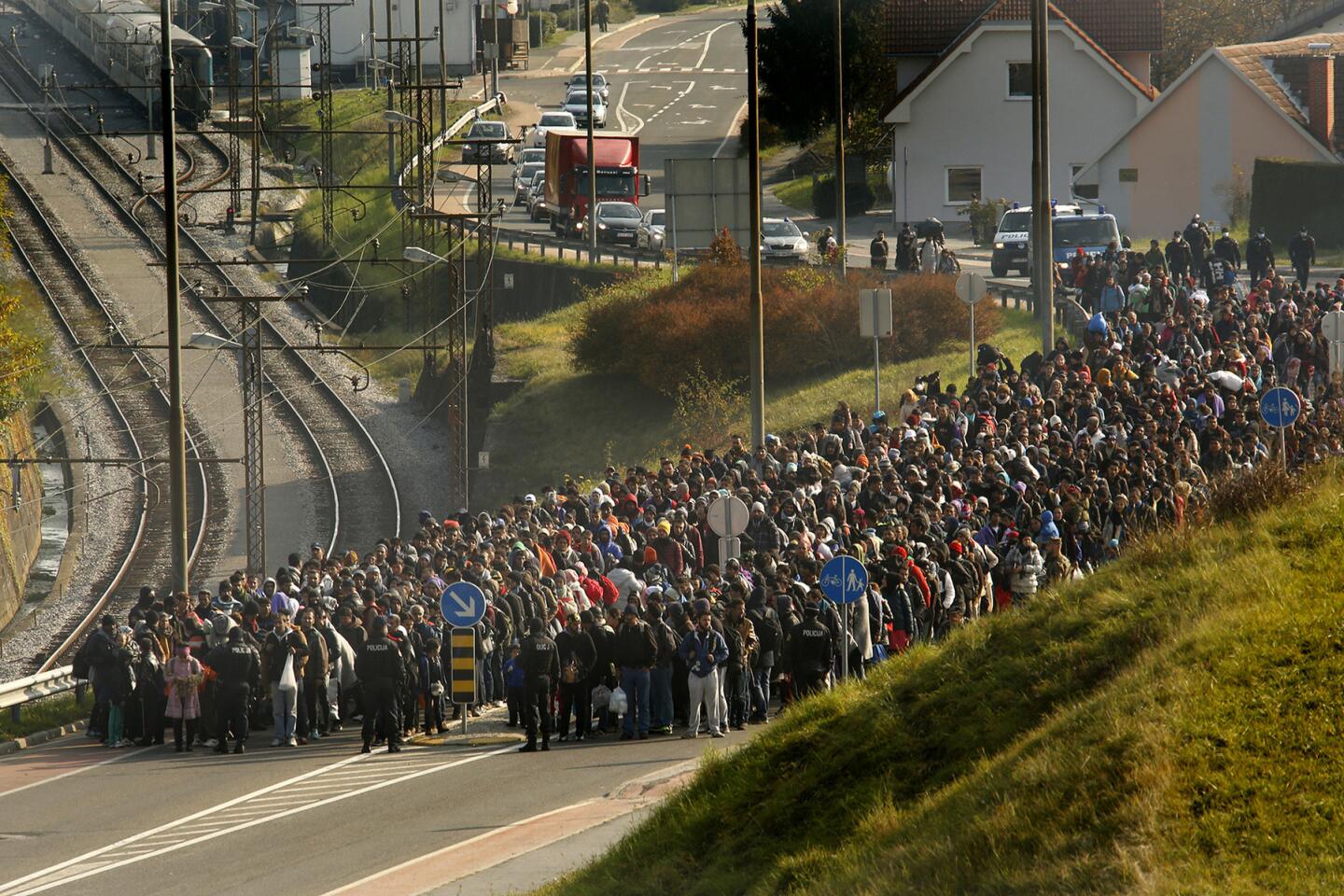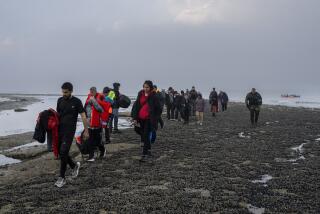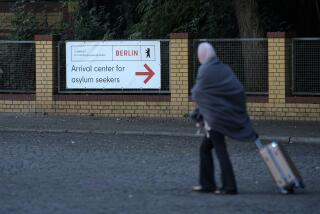Photographer’s journal: A look at Europe’s migrant crisis
reporting from Europe — For six months, I have been watching the news about the refugees and migrants making their way across Europe. The opportunity finally came up for me to cover their journey to Germany. After arriving in Frankfurt, I drove to Zagreb, Croatia, following the migrant trail in reverse to witness this massive movement of people.
Having covered many crises, I’m accustomed to people fleeing wars, but I had never seen the numbers of people I saw when I arrived at the border of Slovenia and Austria.
Four or five times a day, trains carrying over 500 passengers from Syria, Afghanistan, Iraq, Pakistan, Iran, and other locales pulled into the station.
Among them was the Heydari family of Afghanistan. Jamileh Heydari was trying to feed her young son, Matin, as they were being pushed up against the barricade leading to Austria, an impossible situation. And there was Omar Saman of Iraq, who stood in a soggy field at dusk holding one of his children, with no place for his family to sleep.
Vienna
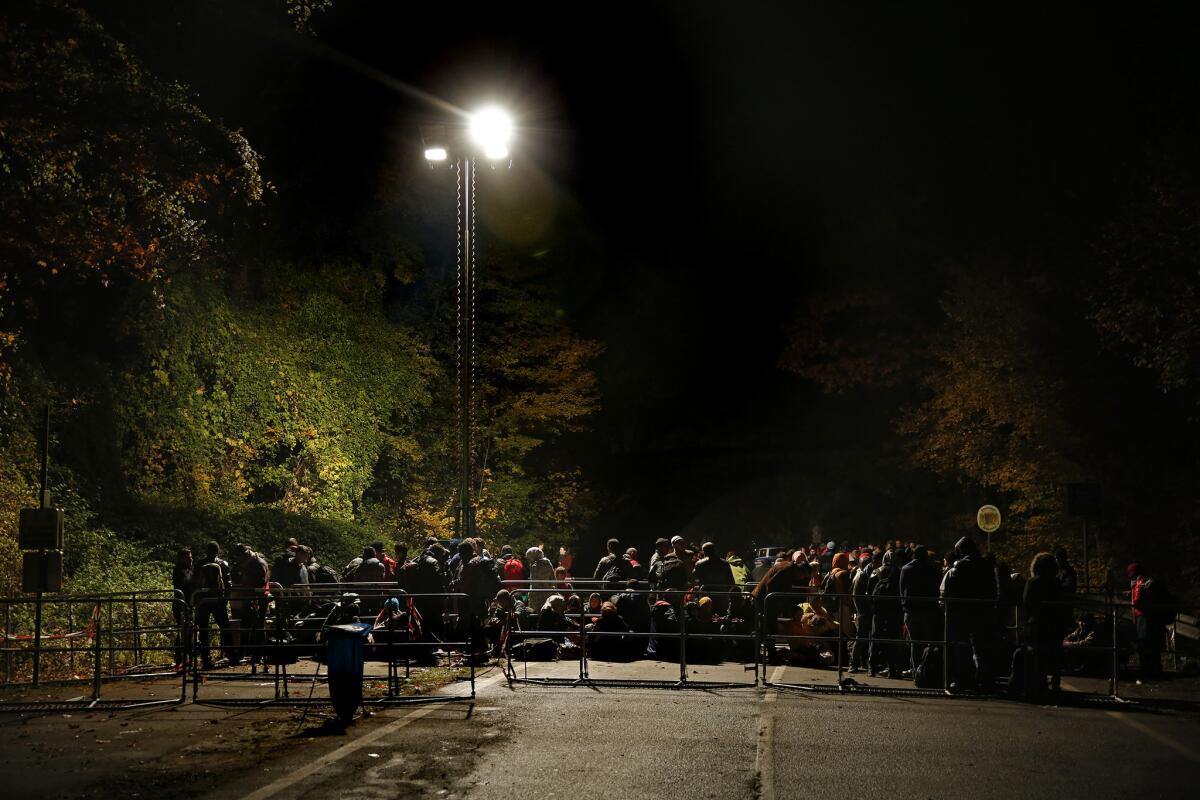
More than 3,000 people arrived at the border of Austria and Germany on Thursday, Oct. 29, as talks on the war in Syria were being held in Vienna.
Passau, Germany
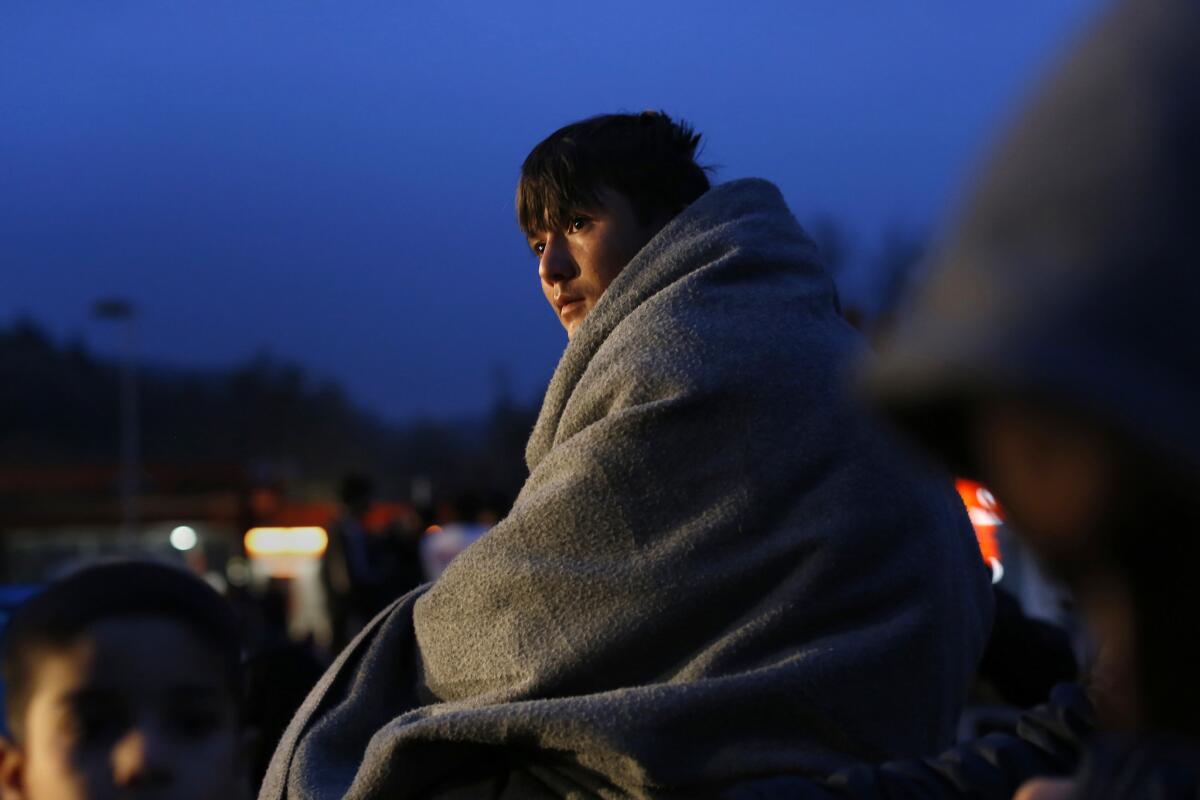
Sardar Mohammed, a 16-year-old from Afghanistan, waits at the border of Austria and Germany.
Austria-Slovenia border
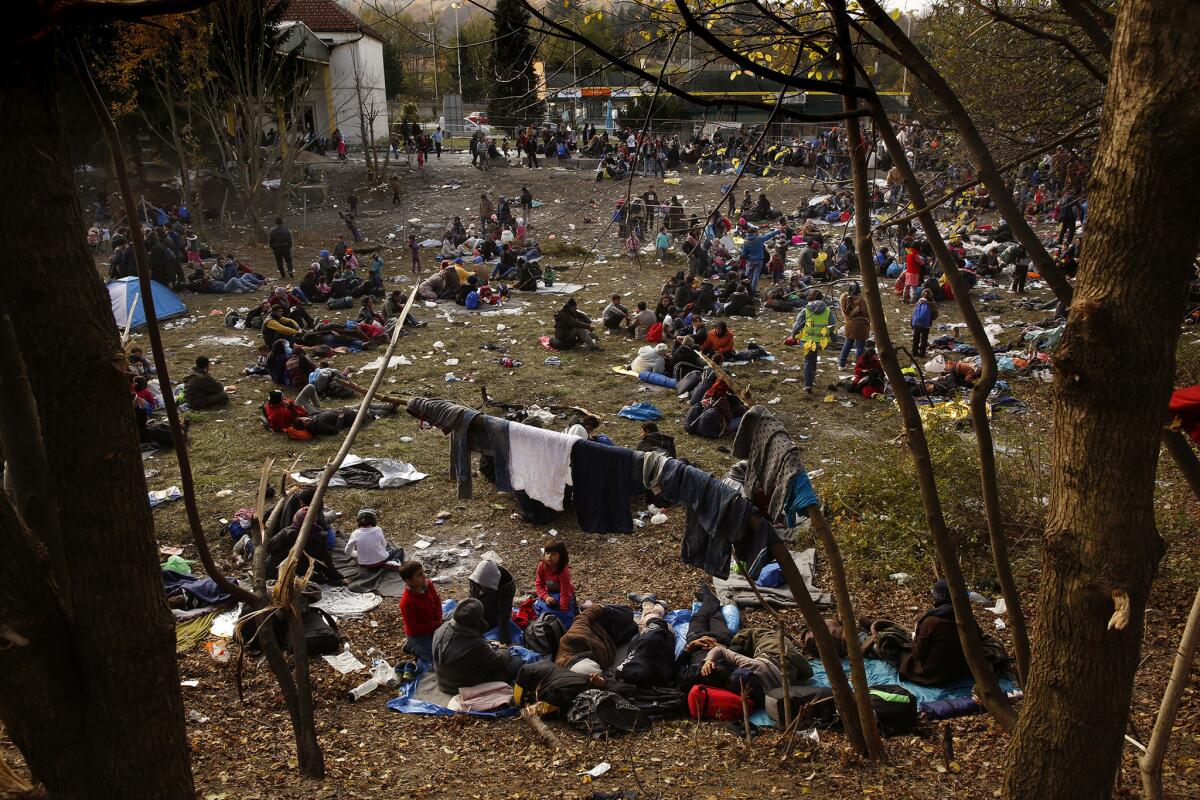
Thousands of men, women and children have been camping for several days on the Slovenia border as they wait to cross into Austria.

Branches from surrounding trees are used for fires to keep people warm.
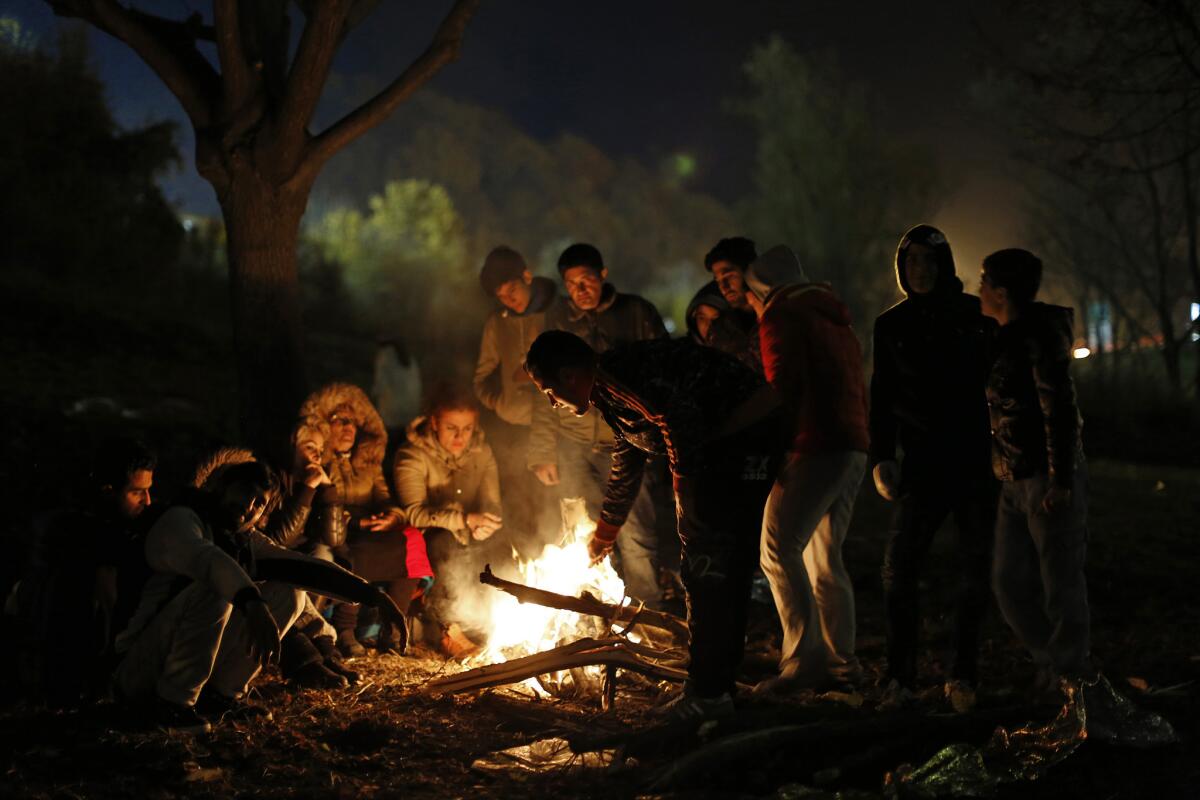
An Iranian family stays warm by a fire as they wait to cross the Slovenia-Austria border.
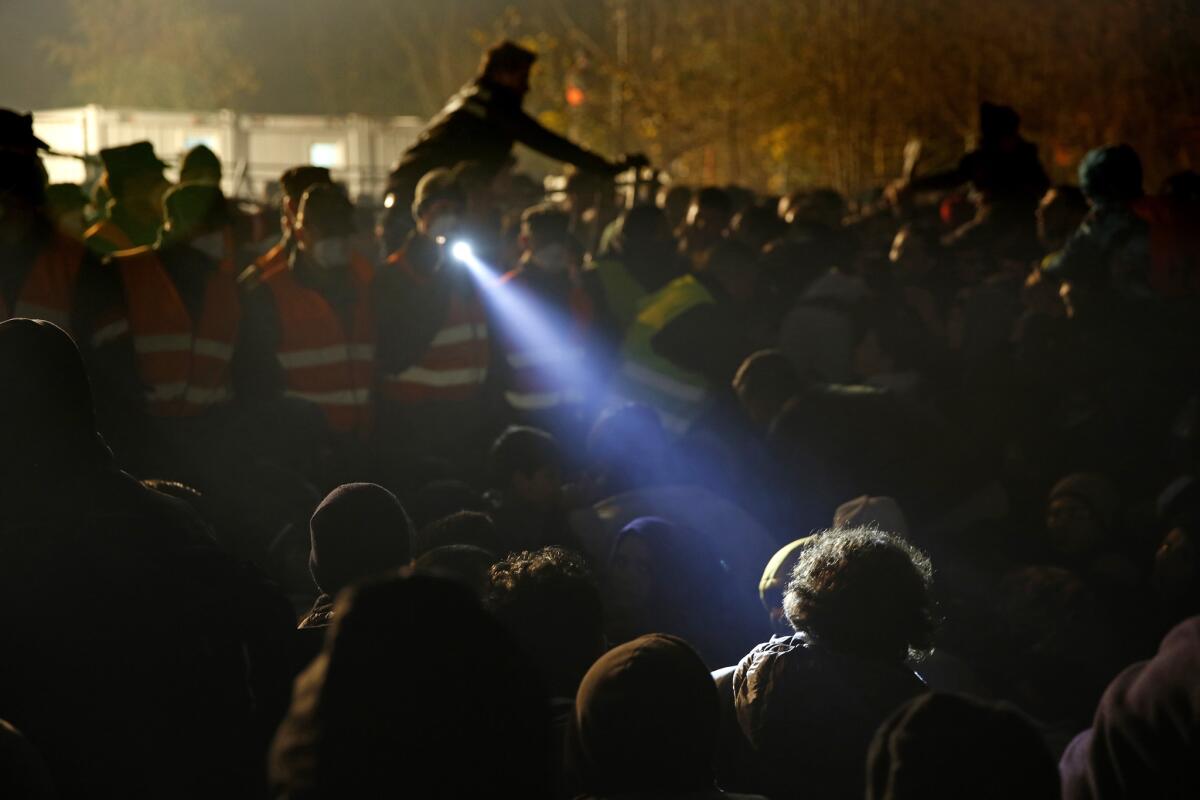
Austrian border guards shine a light on the crowd. Thousands of people have been waiting one to three days to cross the border into Austria from Slovenia.
Passau, Germany
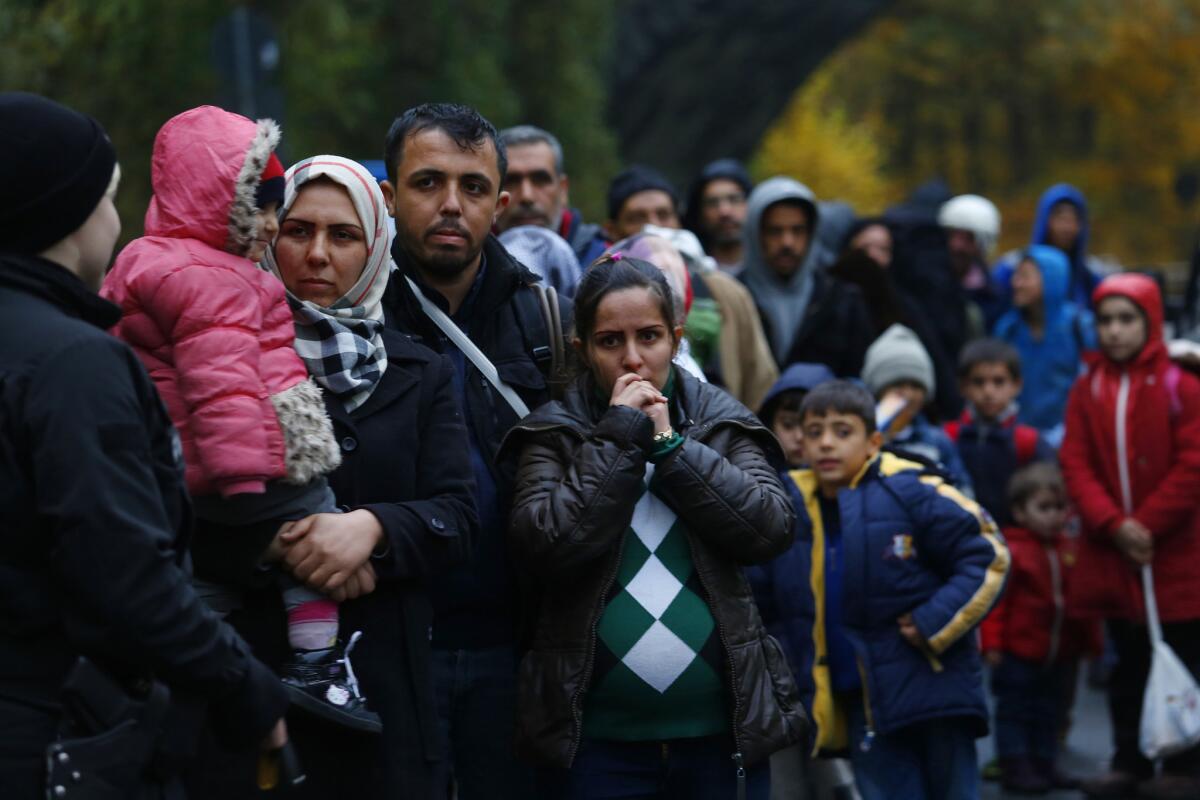
More than 3,000 immigrants arrived at the border of Austria and Germany on Thursday, Oct. 29, as talks on the war in Syria were being held in Vienna.
Austria-Slovenia border
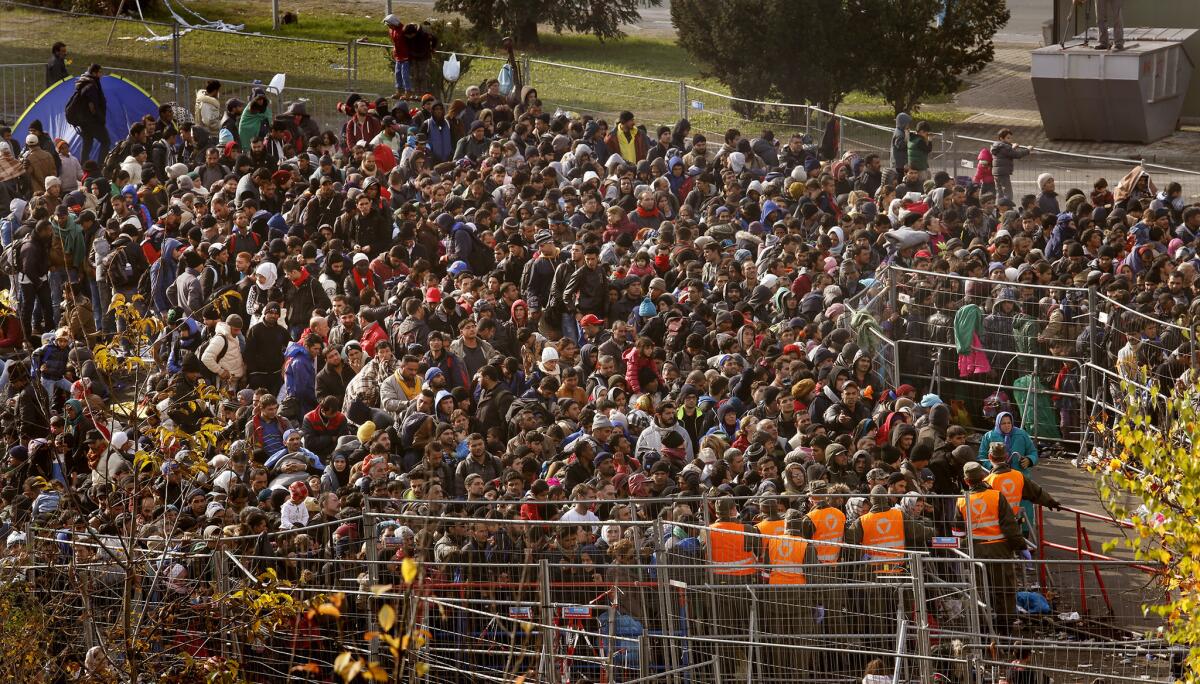
Thousands of people push to get across the border into Austria from Slovenia.
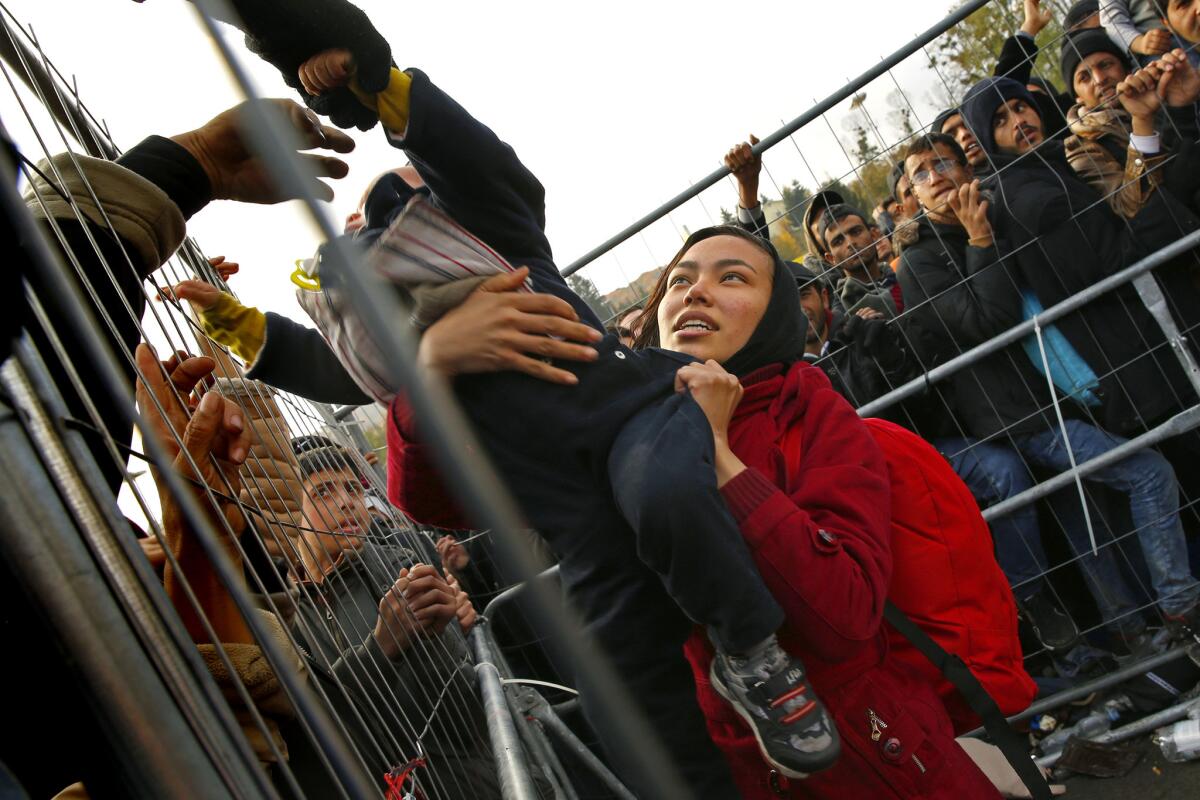
Narges Heydari, 15, catches her brother as he is lifted over the fence at the Austrian border. Narges climbed over the fence to escape the crush of people. She, her parents and three other siblings arrived from Afghanistan.
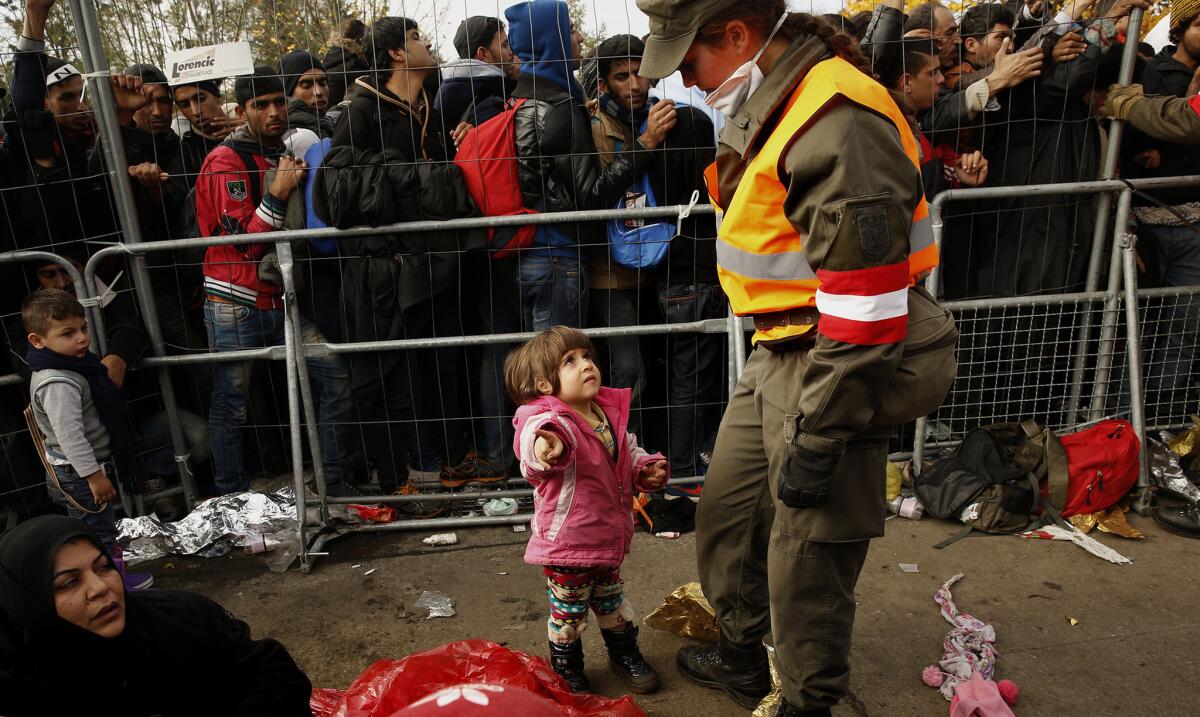
A young Syrian girl tries to get help for her mother after she was separated from her in the line.
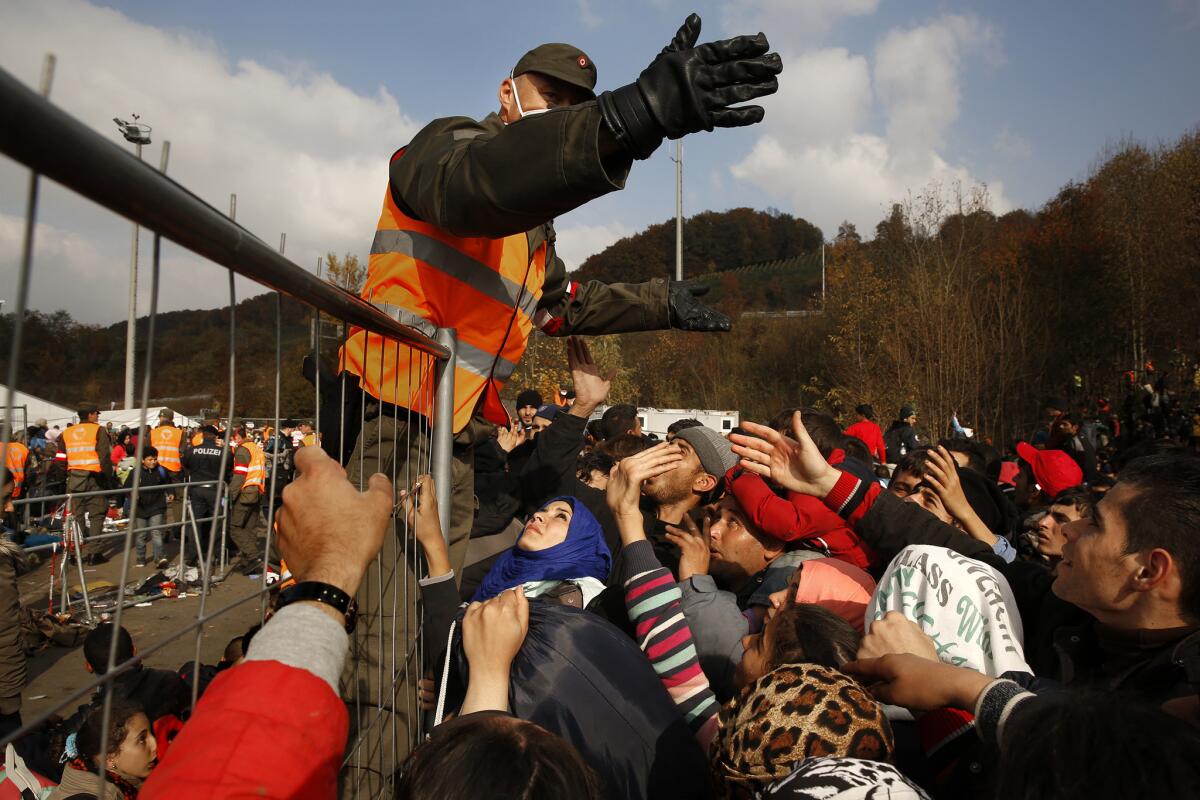
An Austrian border guard tries to get people to back up and stop pushing as thousands of people try to cross the border into Austria from Slovenia.
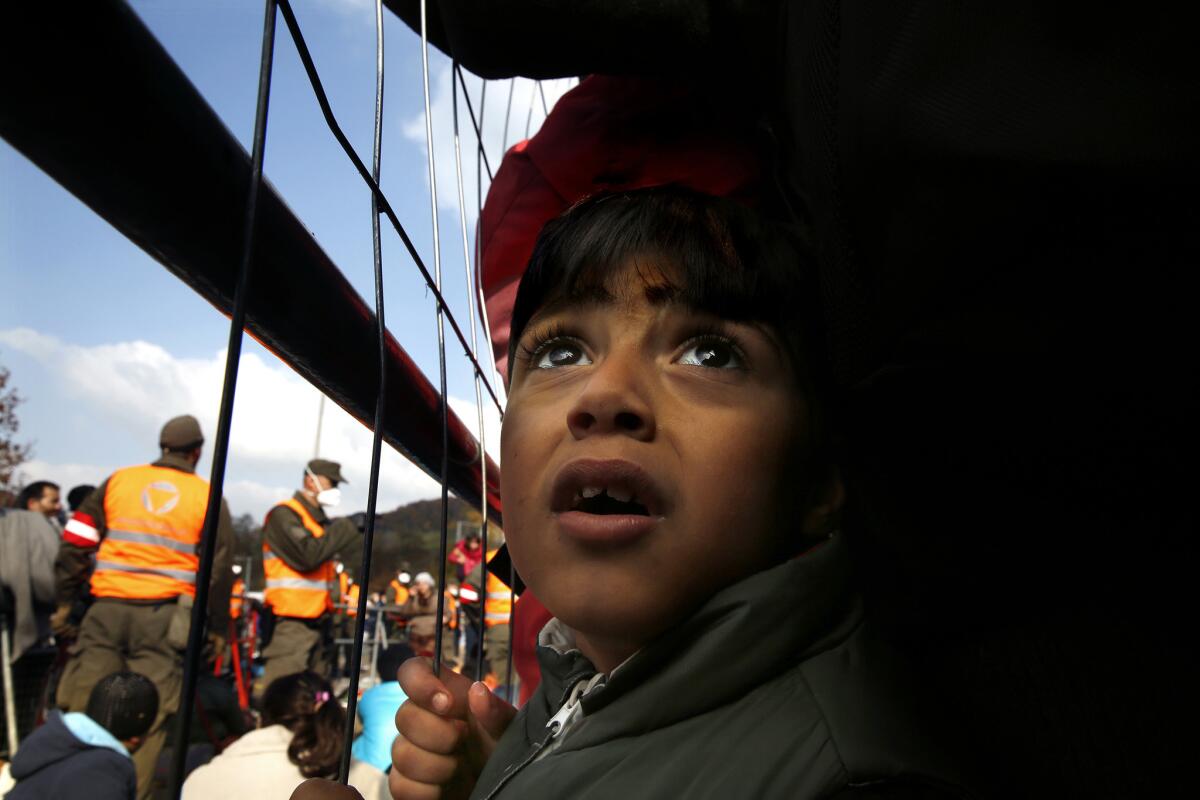
A young Syrian boy is pushed against a fence at the Austrian border.
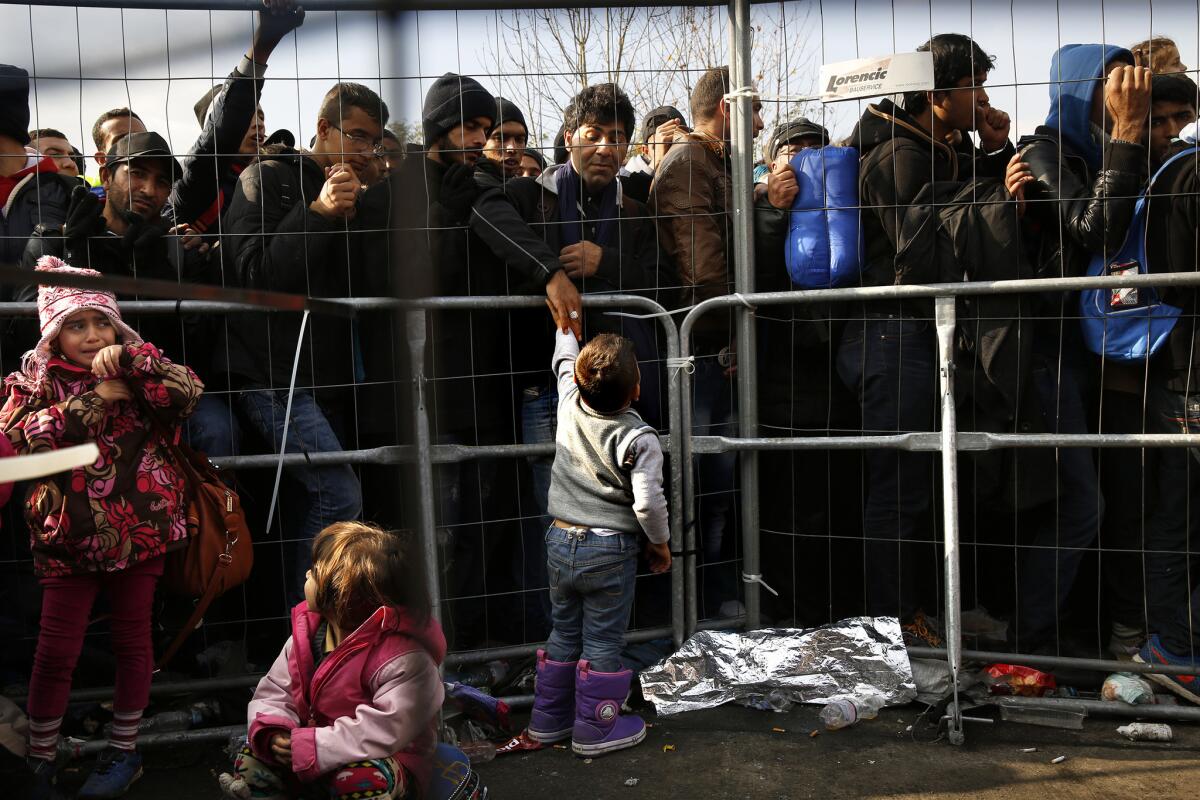
A Syrian man holds his son’s hand through a fence as the father waits to get through to the Austrian side of the border. Small children were separated from their parents as they waited in the crush of people.
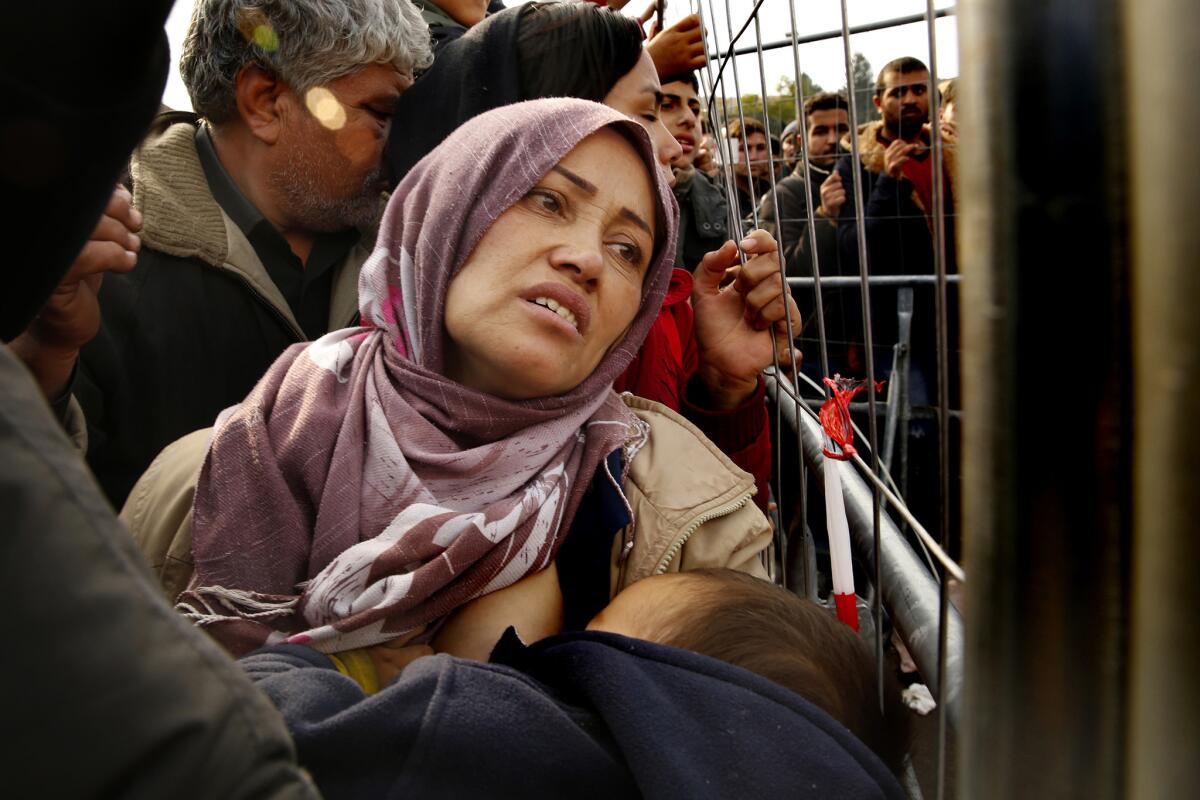
Jamileh Heydari breastfeeds her son Matin as she and her family of five try to enter Austria, after traveling from Afghanistan.
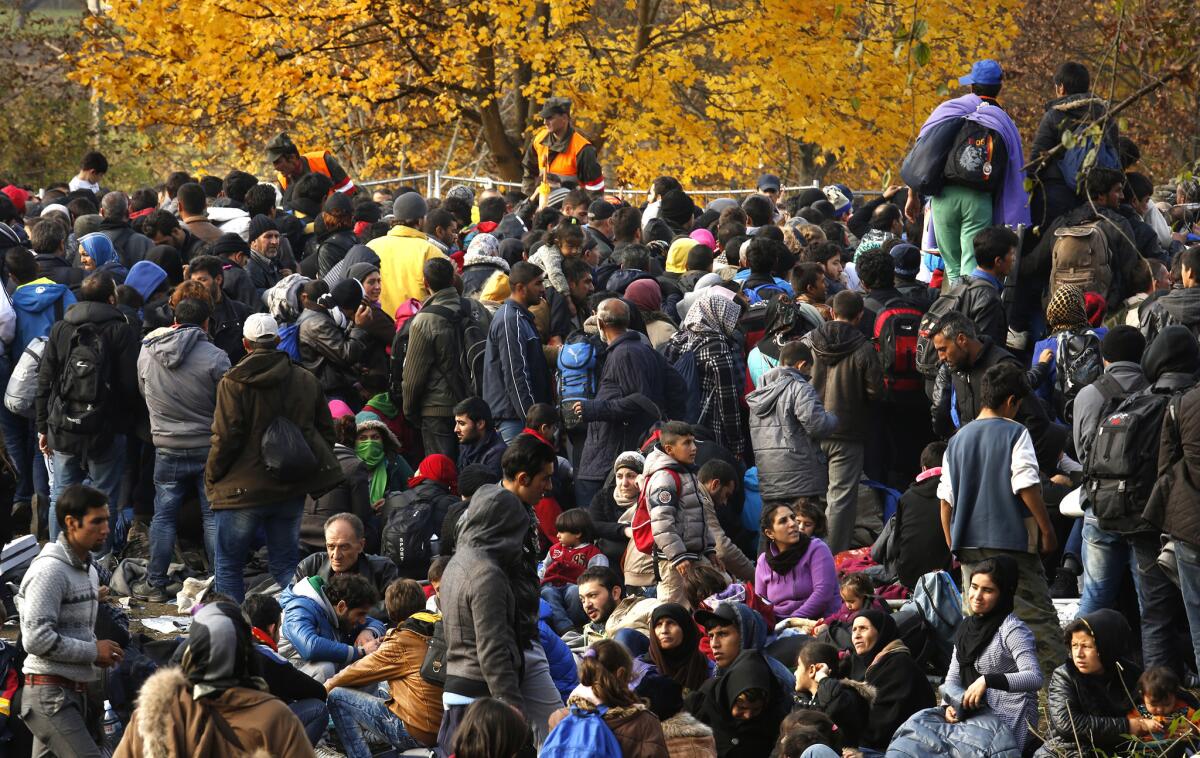
Thousands of people wait to cross the border into Austria from Slovenia, where they waited several days to be processed.
Slovenia border
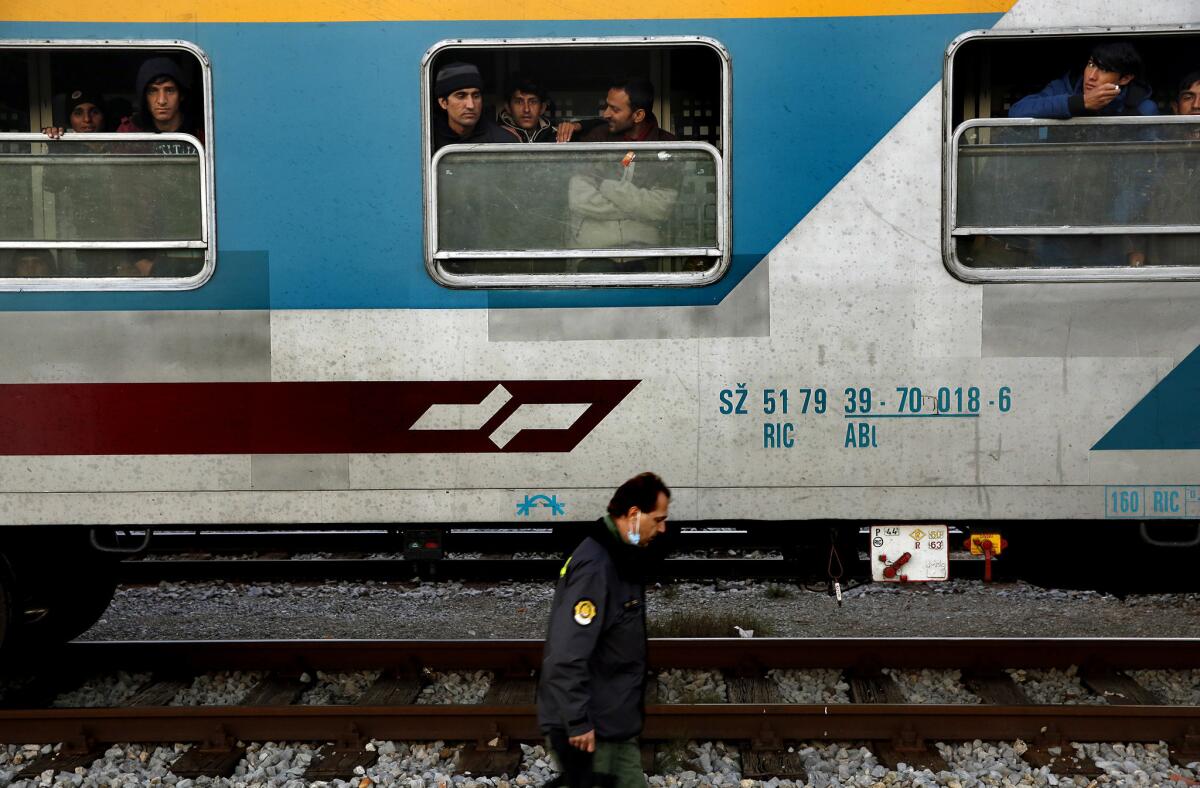
Migrants arrive by train en route to the Slovenia border, where they hope to cross into Austria.
Salzburg, Germany

Migrants arrive at the border of Germany and Austria, where they are processed before boarding trains to points throughout the country.
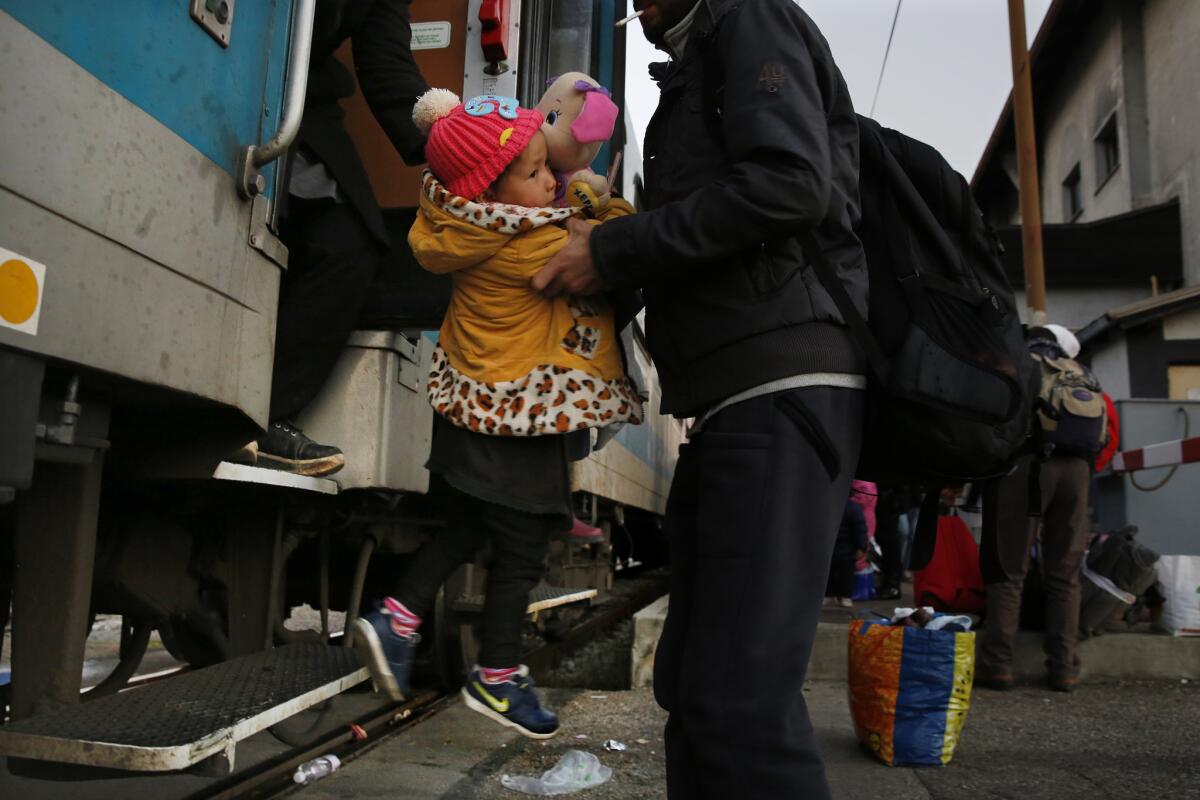
A young Afghan girl is lifted off the train after arriving at the border of Slovenia and Austria.
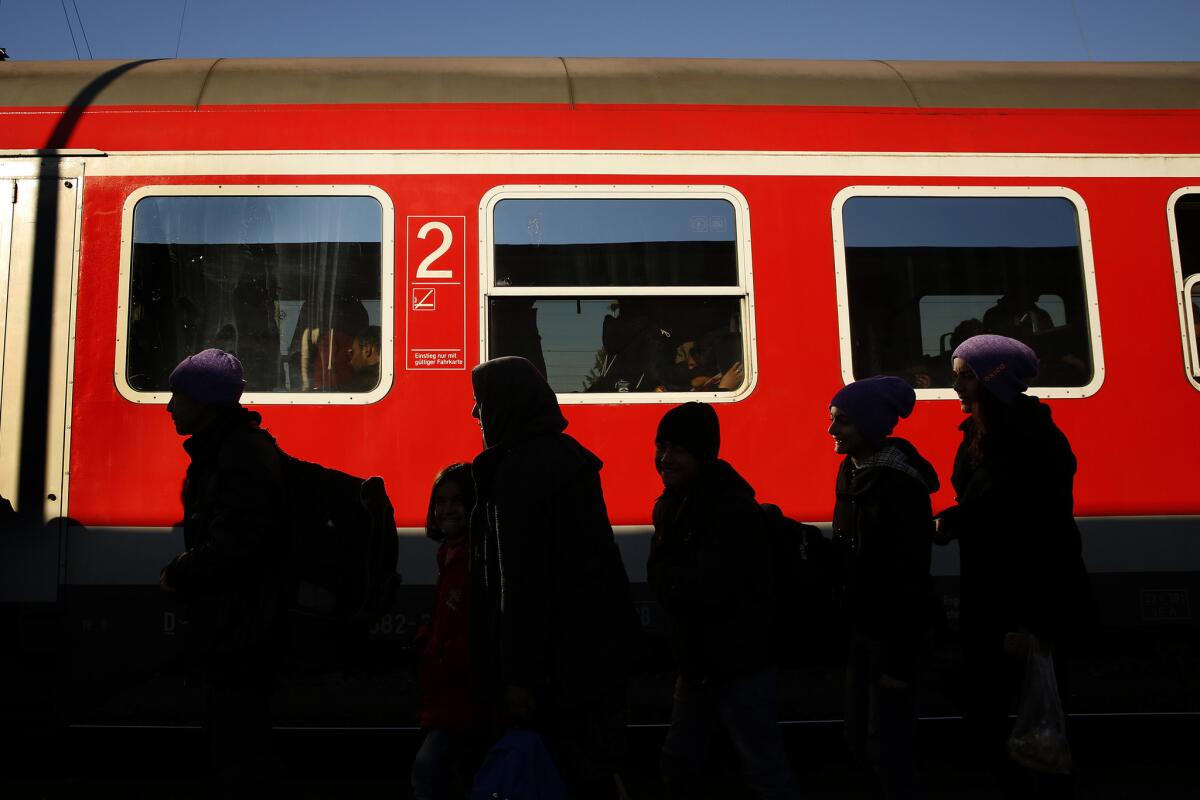
Migrants arrive at the German border, where they are processed before boarding trains to points throughout the country.
Spielfeld, Slovenia
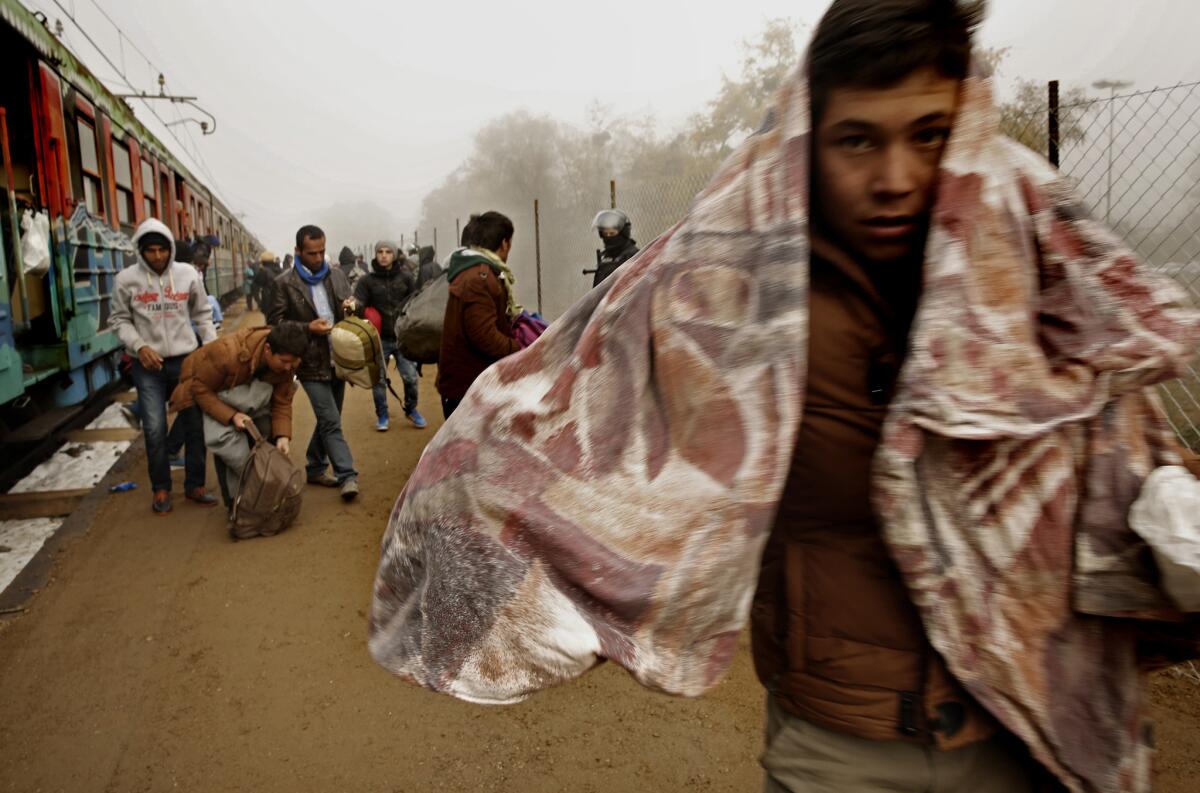
Migrants arrive by train at the boarder of Slovenia and Austria in the early morning and are guarded by Slovenian police and soldiers in the town of Spielfeld on Nov. 1, 2015.
Salzburg, Germany

Abdul Rahman, a Syrian from Aleppo, tries to get into a holding area with his family of 12 at the last stop in Austria before crossing into Germany. Rahman studied law, but his career was interrupted by the war.
Slovenia border

Migrants arriving from the Croatian border walk from the train station to the Slovenia border, where they will cross into Austria.
As many as 1 million refugees are expected to arrive in Germany by year’s end. I will continue my assignment on the Greek island of Lesbos, the first stop in Europe for many after crossing the Aegean Sea from Turkey, and finally the refugee camps in Jordan, where many Syrians remain in limbo.
Who knows how many will join the hundreds of thousands already on a journey to a new life in Europe.
More to Read
Sign up for Essential California
The most important California stories and recommendations in your inbox every morning.
You may occasionally receive promotional content from the Los Angeles Times.
